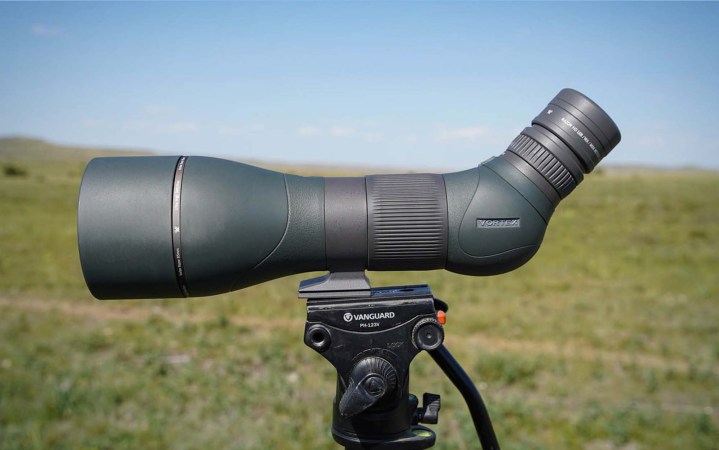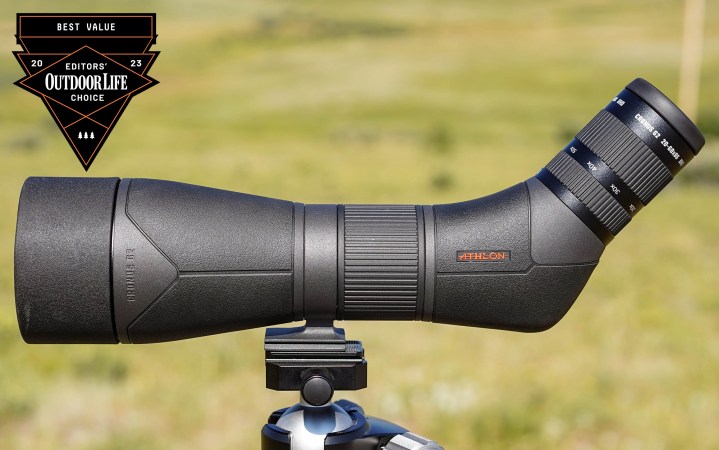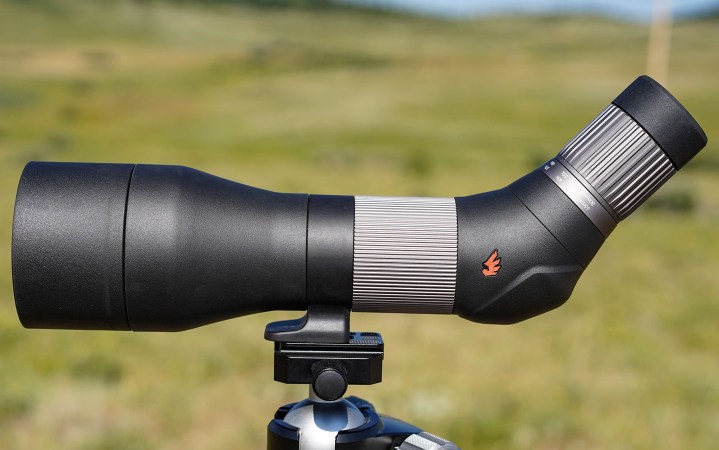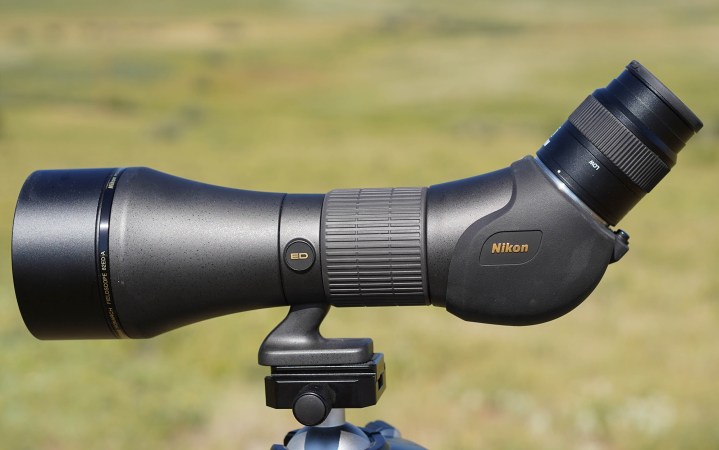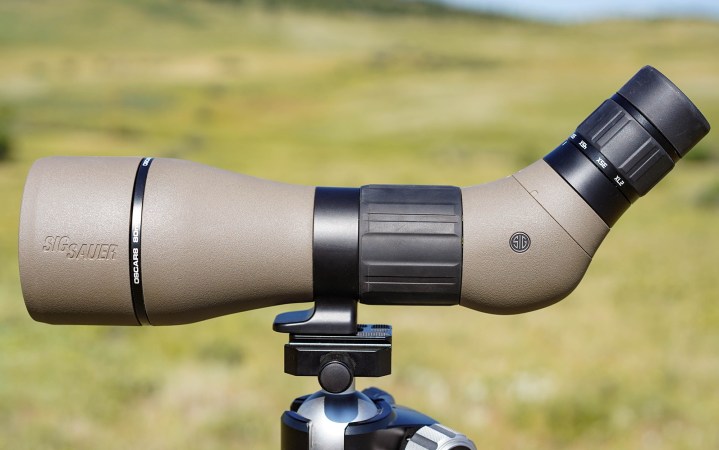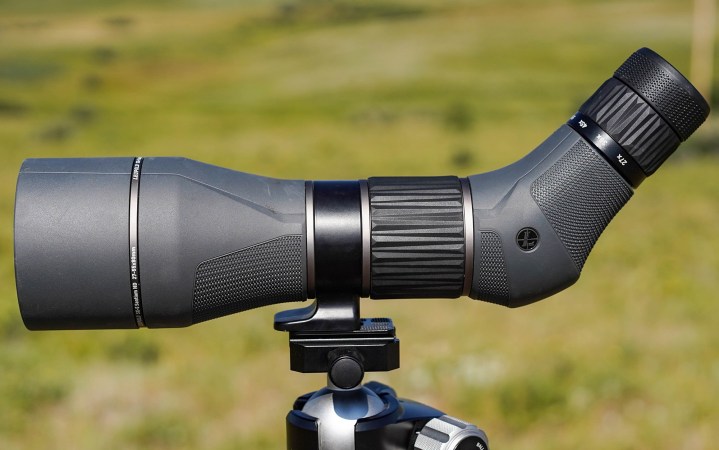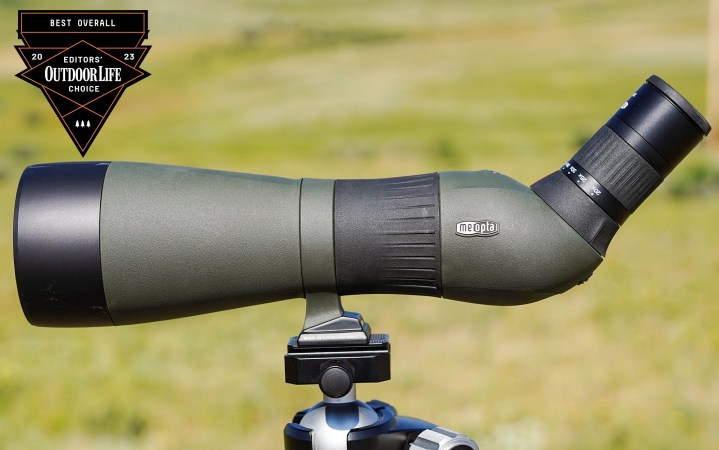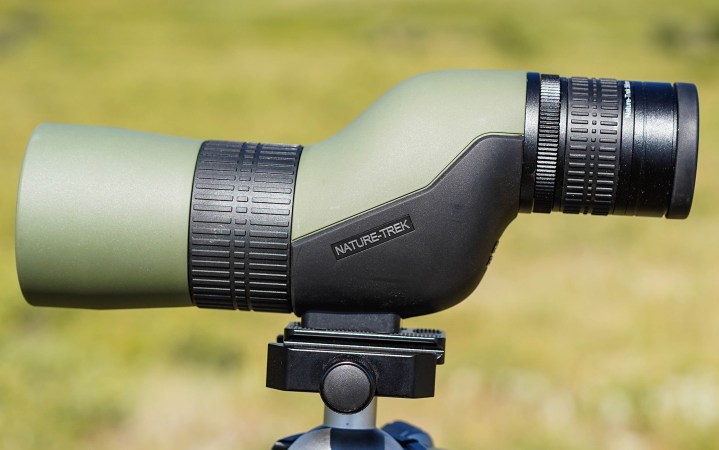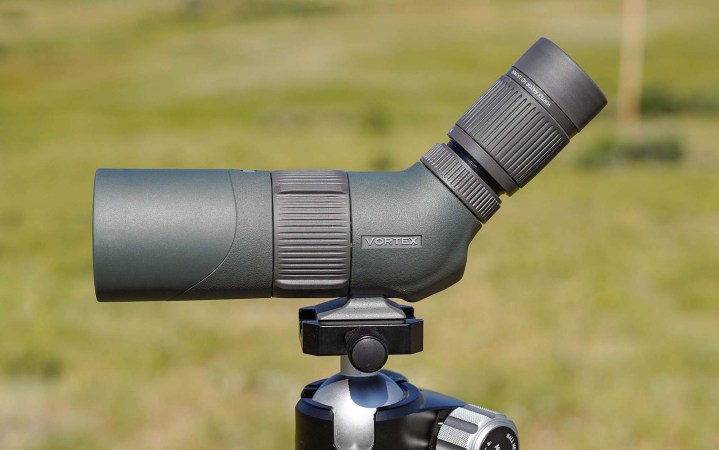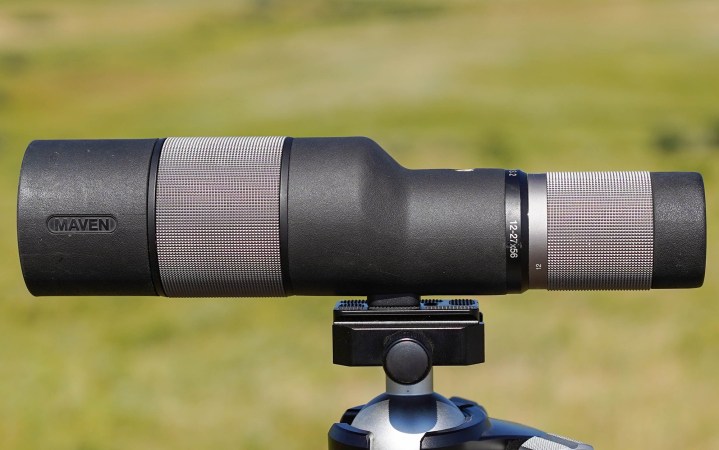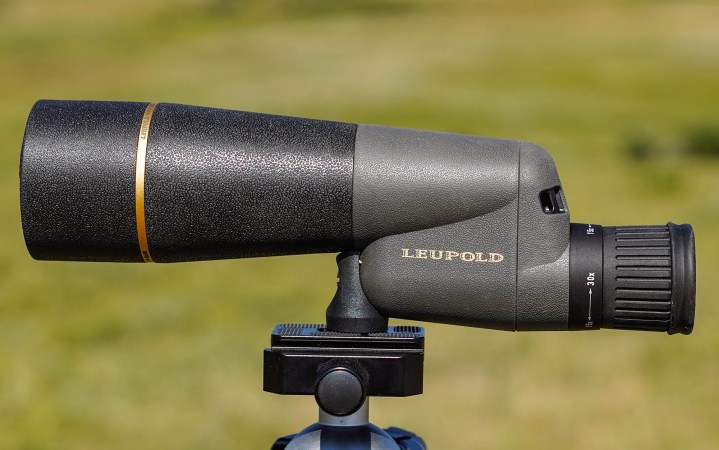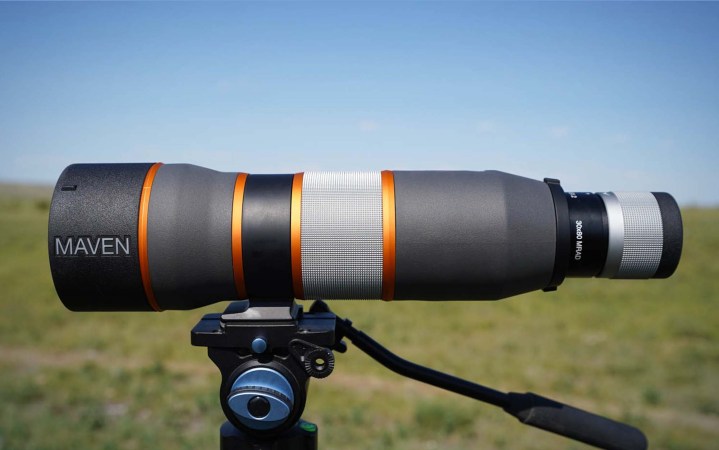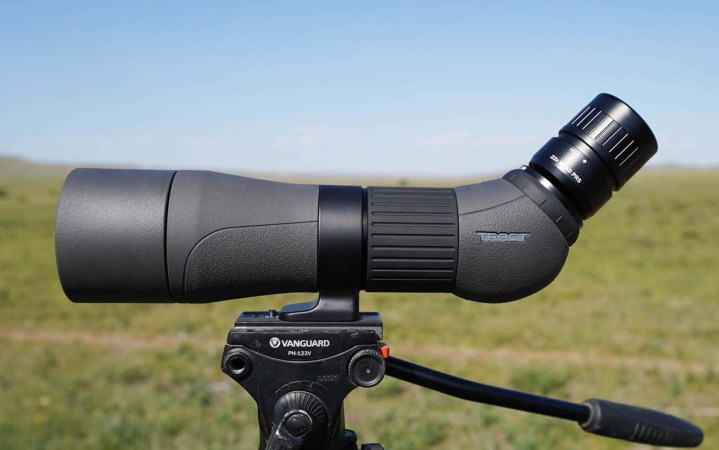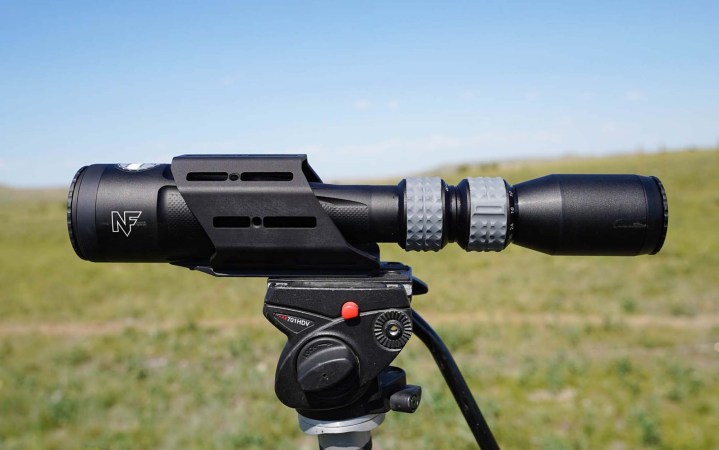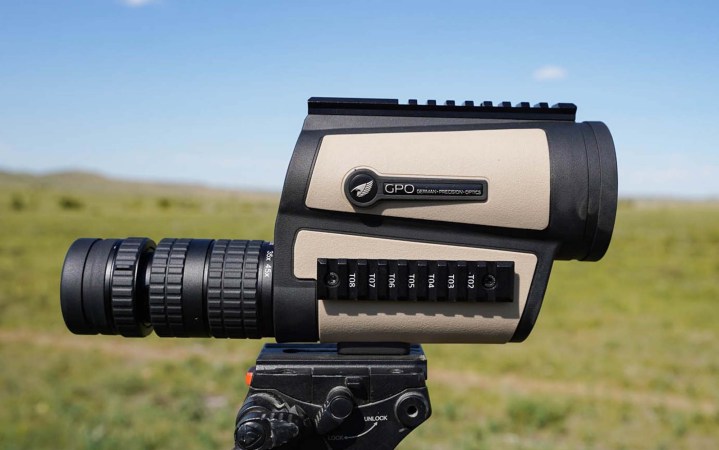The Best Spotting Scopes of 2024, Tested and Reviewed
We may earn revenue from the products available on this page and participate in affiliate programs. Learn More ›
Spotting scopes represent one of the largest investments a hunter or shooter makes, so it’s natural that we spend a disproportionate amount of time and energy researching different brands, models, designs, and sizes before we make a buying decision.
That same deliberate attention to performance and value defines every category of Outdoor Life’s optics test, but especially spotters, since we know — as hunters, shooters, and wildlife-watchers ourselves — how few opportunities most of us have for side-by-side-by-side comparisons of these expensive instruments. Plus, consumers are starved for objective, reliable information, as marketers blur the definitions of glass quality and often exaggerate specifications such as field of view and actual magnification.
That’s where Outdoor Life’s optics test can save you hundreds of dollars and years of literal headache from squinty glass. We are not obligated to any brand or advertiser, and our testers aim to squeeze the very best performance from every submission. As we discuss below, in the How We Test section, you won’t see our extensive 10-point evaluation elsewhere.
Because manufacturers don’t release new spotting scopes every year, we don’t always include a spotter evaluation in our optics test. This year, though, we invited a handful of new introductions along with models that have been on the market for a few years in order to compare the rookies with the veterans, all in an effort to help you decide which spotter is the best for your needs and budget.
We had so much response that we divided the spotting scope field into two sub-categories. We tested nine of the most popular full-size spotters, which sport 80mm or larger objective lenses and magnification ranges anywhere from 27-55x to 20-70-power. And in one of the most exciting categories of the test, we evaluated five compact spotters, those with 50-to-56mm objective lenses and magnification ranges in the 13-39x and 15-30x powers. These sub-compacts, which easily fit in a backpack and weigh in the 2-pound range, are an important new category of sports optics for backcountry hunters and traveling bird-watchers. Find the best spotting scopes in compact and full-size from our extensive optics test below.
Full-Size Spotting Scopes (Jump to this section)
- Best Overall: Vortex Razor HD 27-60×85
- Best Value: Athlon Cronus G2 20-60×86
- Maven S.1A 25-50×80
- Revic Acura S80a 27-55×80
- Nikon Monarch Fieldscope 82ED-A 20-60×82
- Sig Sauer OSCAR8 27-55×80
- Tract Toric UHD 27-55×80
- Leupold SX-5 Santiam HD 27-55×80
- Meopta MeoStar S2 82 20-70×82
Compact Spotting Scopes (Jump to this section)
- Best Overall: Swarovski ATC 17-40×56
- Best Value: Hawke Nature-Trek 13-39×56
- Vortex Razor HD 13-39×56
- Maven S.2
- Leupold Gold Ring Compact 15-30×50
Spotting Scopes with Reticles (Jump to this section)
- Best Overall: Maven S1.2S 25-50×80 w/ MOA/MRAD reticle eyepiece
- Best for Precision Shooting: Tract Toric UHD 22-45×65 w/ 18X and 25X MRAD eyepieces
- Best Mid-Size: Maven S3 20-40×67 w/ 24X MIL or MOA reticle eyepiece
- Most Innovative: Nightforce CFS 6-36×50
- Athlon Cronus G2 UHD 7-42×60
- GPO TAC45 15-45×60
How We Tested the Best Spotting Scopes
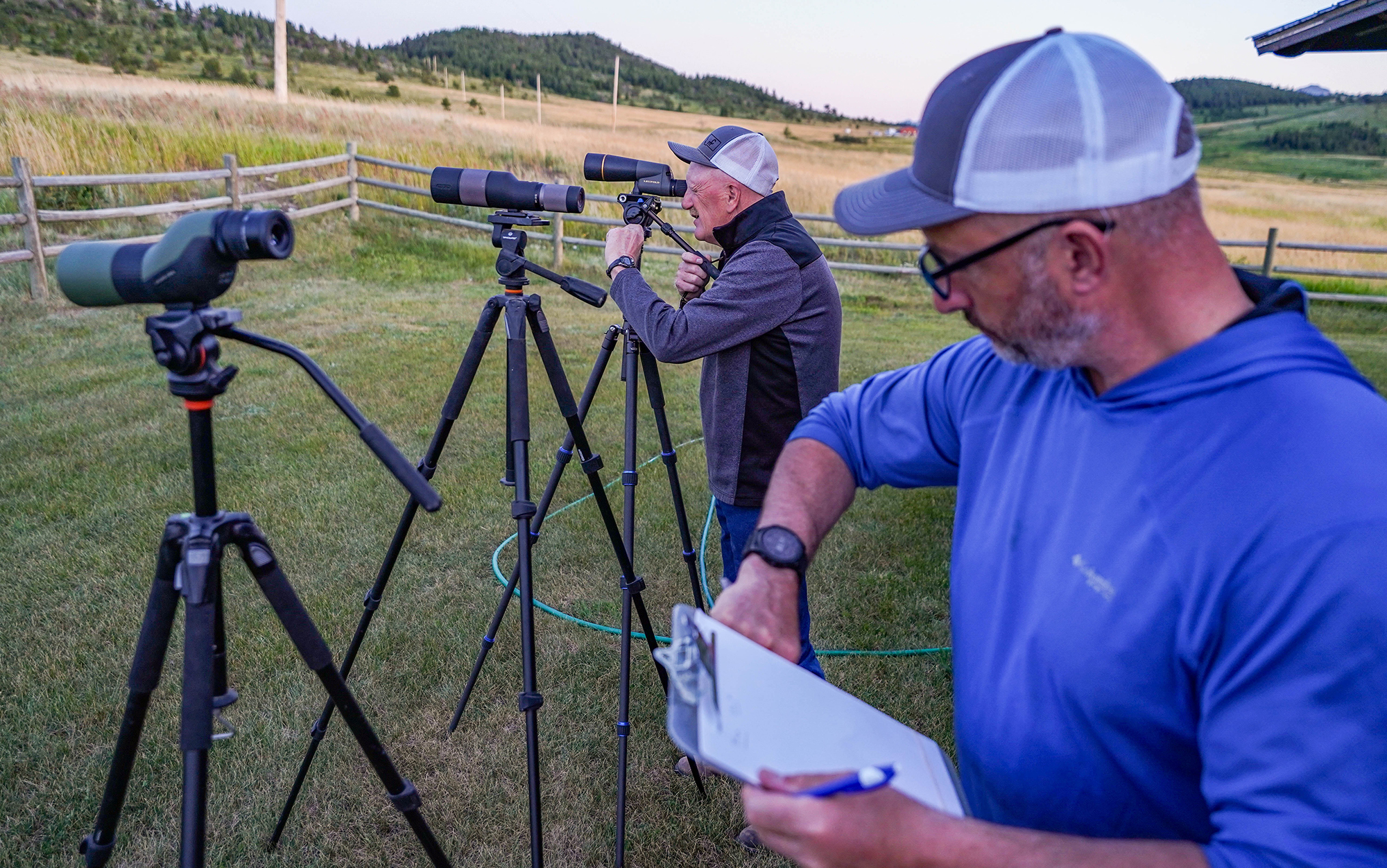
We invite manufacturers to submit any new spotting scopes introduced from mid-2022 through 2023. Because this particular category of sports optics is expensive to manufacture, and because the market isn’t nearly as dynamic as rifle scopes or binoculars—after all, once you’ve purchased a spotting scope, you’re unlikely to be in the market for another—we test spotters only every two or three years.
Optical Resolution
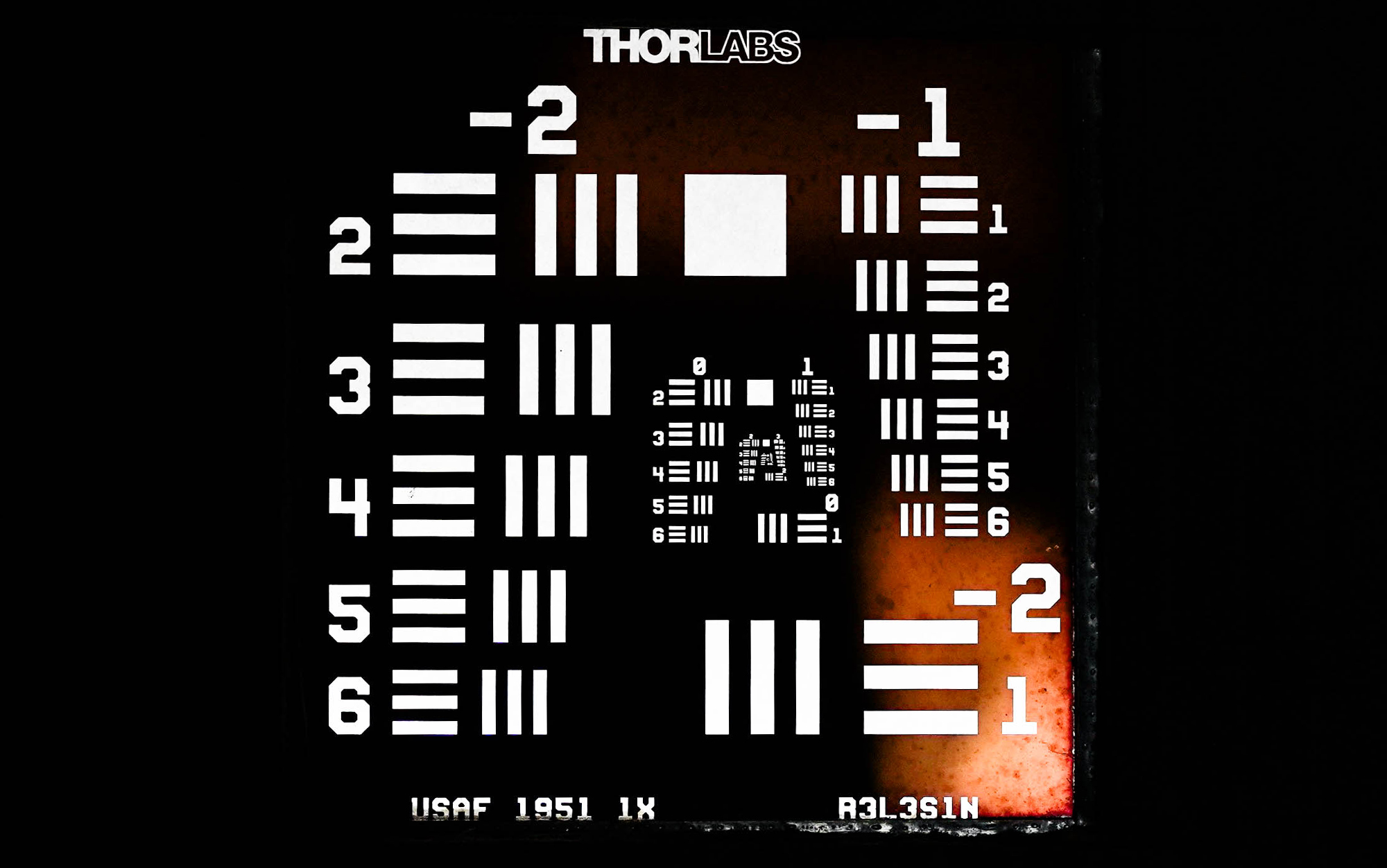
We put all submissions, whether full-size or super-compact, through the same criteria. First, we measure optical resolution, using the diminishing black-and-white lines of a 1951 Air Force Resolution Target to score the optical performance of each submission.
Low-Light Performance

We also measure the low-light performance of each submission by mounting them to tripods and focusing them at 200 yards at a black-and-white resolution target at twilight, all in order to measure the brightness of the glass.
The scope that can “see” the longest into the gathering darkness gets top marks. The scope that loses its night-vision earliest gets the lowest score. Scopes in the middle receive scores somewhere between those two poles.
How We Score and Grade Optics
We break our 10-point scoring into four general categories: optical performance, mechanical performance, design, and value. The average of these categories is the basis of our grades, detailed below.
Optical performance includes the resolution and low-light tests plus the more subjective assessments of image quality and brightness. Mechanical performance assesses the durability of the submission along with its controls: focus and zoom, eyecups and barrel rotation. Design considers the exterior finish, interior blacking, tripod mount, and its innovation and versatility along with its comfort. We ask testers to evaluate this critical question: how long could you glass with this spotter?
And then our price/value score rates how much optic—along with warranty and amenities such as carrying case, additional eyepieces, or field cover—you’re getting for your money. The spotter that gets the highest overall score wins our Editor’s Choice award for the best in the category; the optic with the highest price/value score wins our Great Buy recognition.
Grading
Our 10-point evaluation adds up to a total numeric score, but we translate those to grades for each submission. Our Optical Performance grade combines the scores from resolution, low-light, image, and brightness. Our Mechanical Performance grade aggregates the mechanics and durability score. The Design grade considers Construction, Innovation, Versatility, and Comfort. And then the Price/Value grade is our value grade.
To earn an “Excellent” grade, the average of that category must be 9 or higher, which is extremely hard to achieve. “Very Good” is an average score of 7 to 9. A “Good” grade is 5 to 7. Our “Fair” grade is 3 to 25, and “Poor” is anything under 3.
The Best Spotting Scopes: Full Size
Best Overall: Vortex Razor HD 27-60×85
Score Card
- Optical Performance: Excellent
- Mechanical Performance: Very Good
- Design: Very Good
- Price/Value: Good
Key Features
- Angled design
- Oversized center-barrel focus control
- Integrated Arca-Swiss tripod foot
- Premium glass and coatings
- Removable eyepiece
- Accepts range-ready 22-power eyepiece with MOA or MIL reticle
- Field of View: 117 to 68 ft at 1000 yards
- Weight: 65.6 ounces
- MSRP: $2,400 (around $1,700 real-world price)
Pros
- Ships with neoprene cover
- Nicely textured controls
- Barrel rotates for variable mounting options
- Reticle leveler is nice touch
Cons
- Reticle disappears against cluttered backgrounds
- No adjustable eyecup on reticle eyepiece
Serious wildlife observers have heaped praise on Vortex’s flagship spotter since it was introduced more than a decade ago, and the addition of a separate eyepiece containing a precision reticle allows users to take the scope from the field to the range.
The optics in the big 85mm spotting scope are unimpeachable. Images are bright and vivid at lower powers, though they degrade significantly above about 45-power, as you might expect with the extreme magnification. The controls are velvety and precise, and overall handling and balance of the scope belies its hefty 4-pound weight.
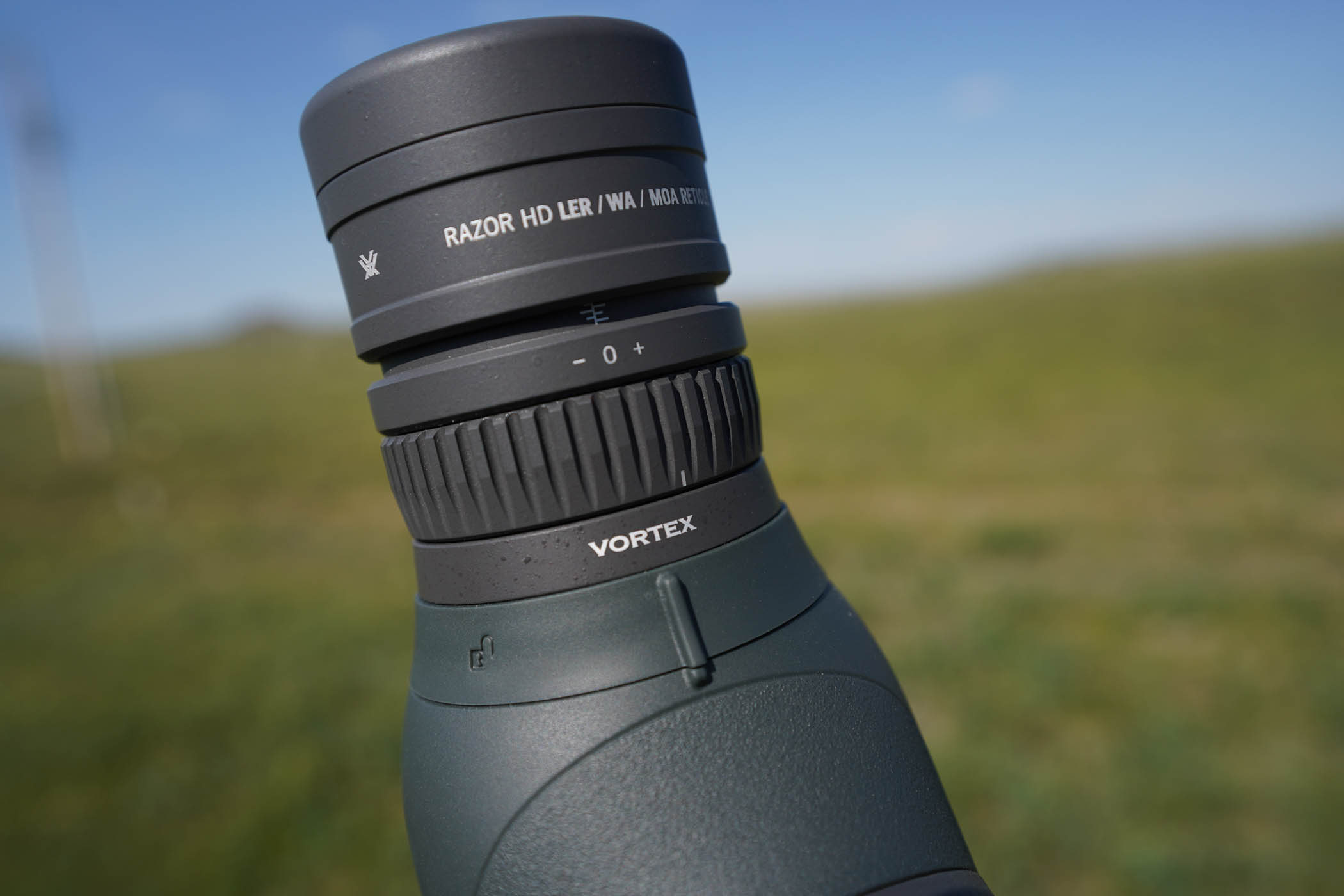
Scott Einsmann
The new reticle eyepiece, available in either MOA or MIL values, is a useful addition. The wide-angle 22-power eyepiece has a generous field of view, and the reticle — our test sample was the MOA version — is both versatile and deeply helpful for communicating hits and misses to a shooter behind an MOA-based rifle scope. The MOA option has 64 MOA of elevation references and 68 MOA of windage values on either side of the T center aiming point. Each step is a single MOA, with .5 MOA hashes between full-value MOA hashes, and a numeric reference every 4 MOA.
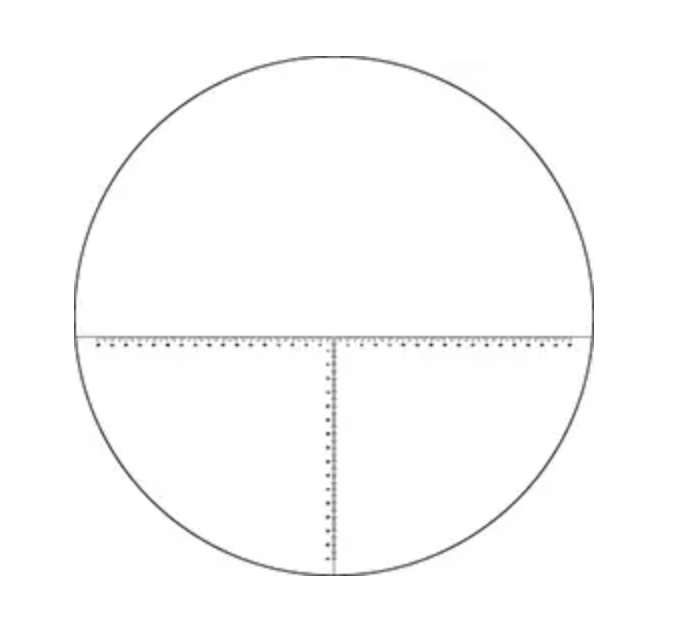
Vorte
We wish the reticle was bolder. The fineness of the crosshair gets lost against dark or complicated backgrounds, and because all the numeric references and the associated hashes have the same weight, the reticle is slow to use. A system with hashes of various lengths and boldness might make for quicker use in the field and better overall visibility. We also wanted a retractable eyecup on the reticle eyepiece.
But we felt that the real-world street price of about $1,700 is fair for such a world-class spotter, and the sold-separately reticle eyepiece runs about $400. It’s a significant investment, but the Razor HD is likely the last spotting scope you’ll buy for some time, and if you do much precision shooting, the reticle is a very useful addition. If your observation work is limited to spotting for a shooter, you might consider the 22-48×65 version of the Razor HD, which is lighter and more compact but delivers a mighty optical punch.
Great Buy: Athlon Cronus G2 20-60×86
Score Card
- Optical Performance: Good
- Mechanical Performance: Very Good
- Design: Good
- Price/Value: Very Good
Key Features
- 86mm objective lens, largest in the field
- Non-removable eyepiece
- Angled eyepiece
- Center-barrel focus
- Magnesium chassis
- Retractable sunshade
- Pebbled texturing
Pros
- Ships with nylon field case
- Fairly good glass
- Street price under $1,000
- Big 86mm objective lens
- Good close focus
- Excellent warranty
Cons
- Some play in power ring and sunshade
- Some peripheral distortion
- UHD glass designation is questionable
- Average clarity at higher powers
With a real-world street price at a cool $1,000, there’s a ton of value in this big 86mm spotter. It delivers a bright, sharp image at lower powers, it has very nice controls and a tight, robust build, and it has a cast-iron transferable lifetime warranty. Testers gave it the highest score in our Price/Value category, and it must be said that no other full-size spotter was even close.
It’s worth observing, though, that testers also noted that both brightness and optical clarity degrade at about 48-power. This is a fairly common shortcoming among price-point spotters. They tend to deliver pretty good images at lower magnifications but fall apart as the exit pupil—this is the small bright spot that is inversely proportional to magnification—gets smaller. That’s a function of glass. A big 80mm-class objective lens takes a lot of premium glass, and Athlon isn’t the only brand to throw out meaningless terms to define the class of glass that they use.
Athlon calls their objective-lens glass “ultra-high-definition” or UHD. That’s a marketing term, and not a particularly worthwhile optical definition. It might indicate the spotter has some fluorite in its composition—that’s a material used to correct chromatic aberrations, or color fringing and flaring—or it might have some higher-quality glass in the objective lens than is used in internal lenses. Either way, the fairly pedestrian grade of glass in the Cronus is responsible for causing the image to break down at higher magnifications and in lower light conditions.
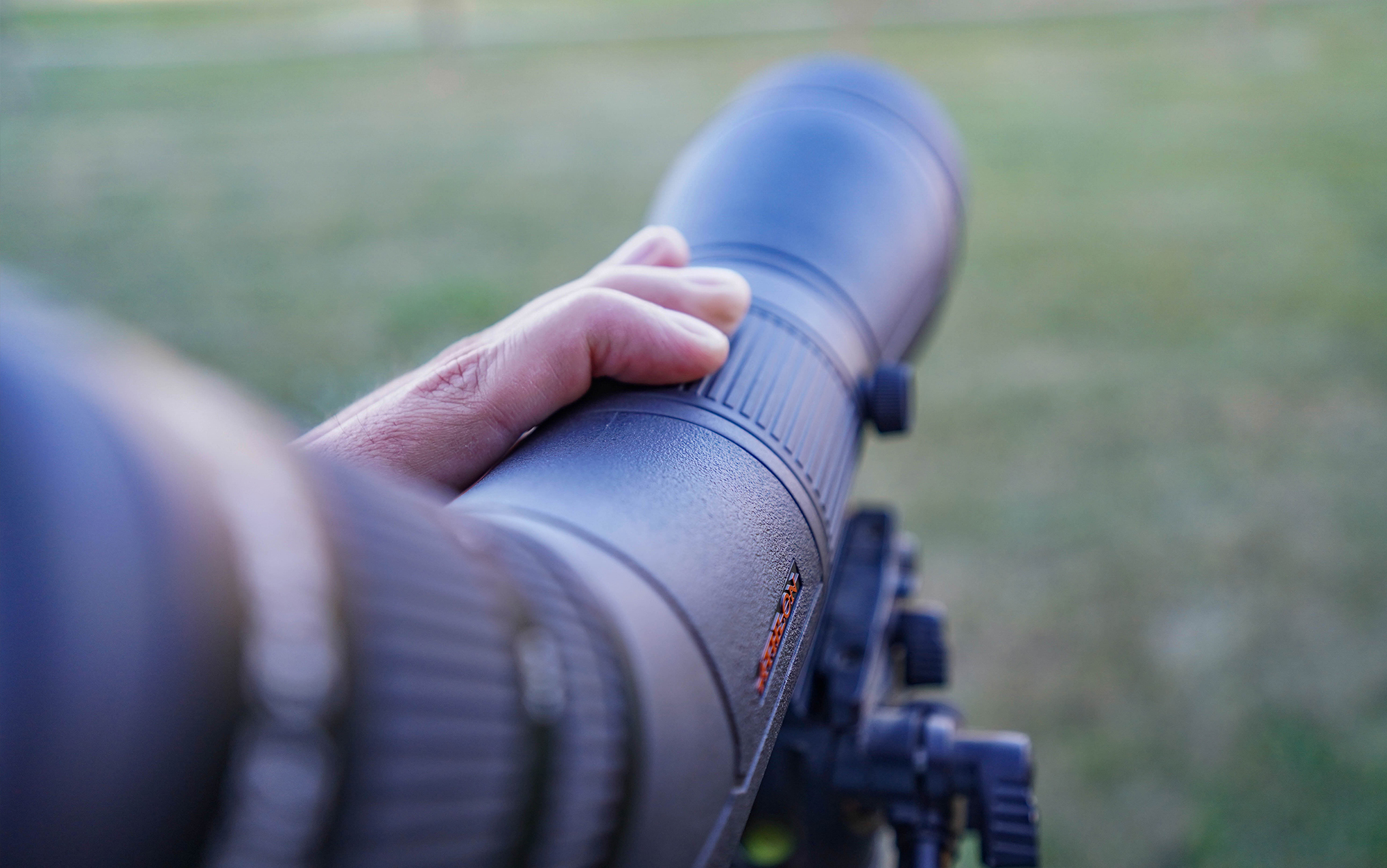
But the Athlon brings so many other talents to the game: nice texturing, well-rendered internal blacking, and decent focus and zoom controls. Testers noted a bit of slop in both the focus and power-changing wheels, but not enough to downgrade their value assessment.
If you’re in the market for a serious full-sized spotter at a very approachable price point, you should get years of excellent performance from this big unit that has better glass than most of its price-point peers.
Maven S.1A 25-50×80
Score Card
- Optical Performance: Good
- Mechanical Performance: Very Good
- Design: Excellent
- Price/Value: Very Good
Key Features
- 80m objective lens
- Angled eyepiece
- Center-barrel focus
- Distinctive orange/black/gray exterior styling
- Non-removable eyepiece
- Retractable sunshade
- Magnesium/polymer chassis
- Direct-to-consumer retail model
Pros
- Premium high-definition fluorite glass in objective lens
- Responsive controls
- Aggressive diamond-cut texturing on exterior surfaces
- Lifetime warranty
- Excellent price for level of performance
Cons
- Disappointing low-light performance
- Grainy image at highest magnifications
- Fixed eyepiece
A ravishing beauty, the Maven easily won our informal “eye-candy” award as the handsomest spotter in the field. That’s to be expected from a brand that has adorned the generic black tubes that characterize most optics with color accents and stylistic flourishes.
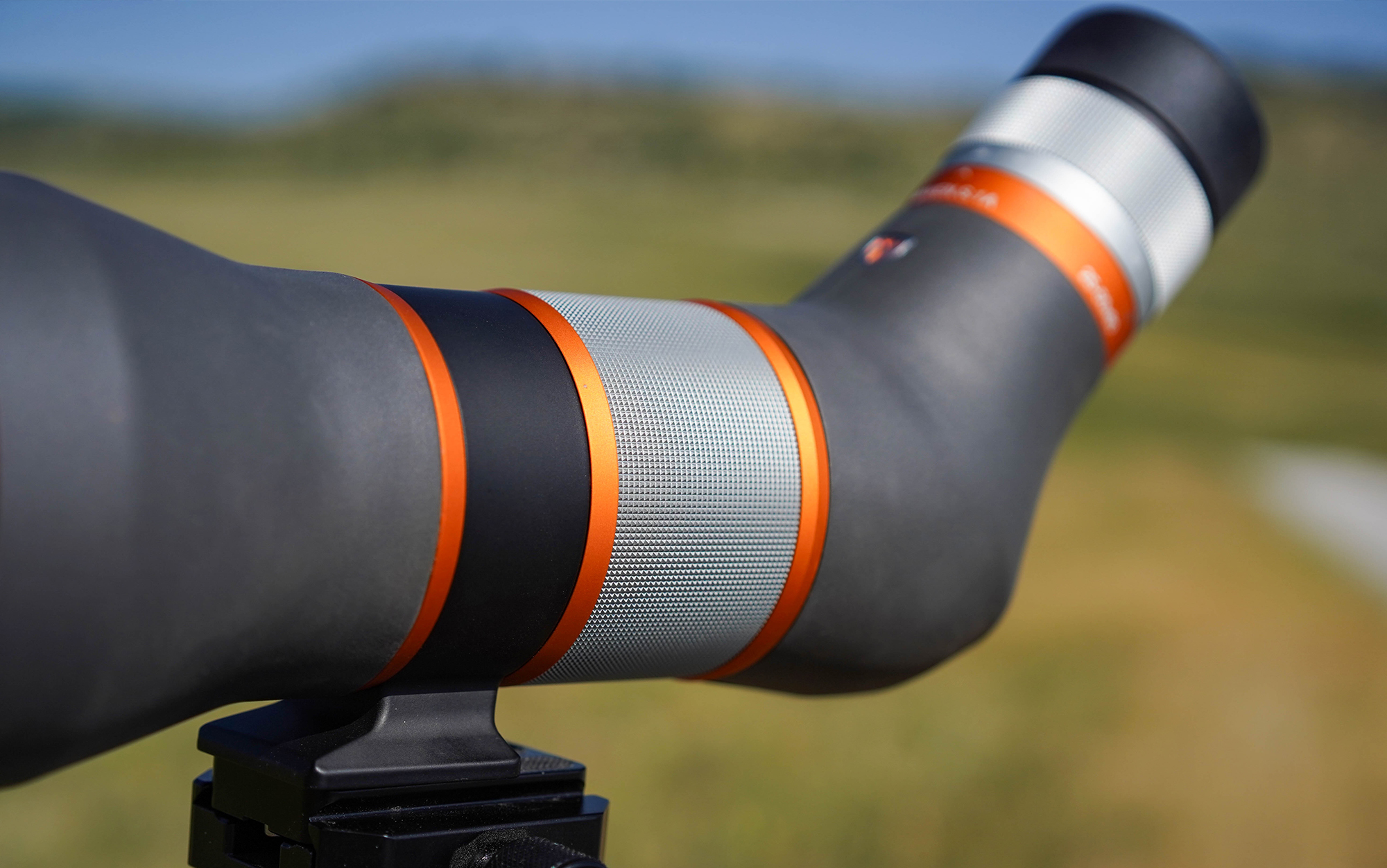
But the Maven isn’t just for looks. Testers rated its velvety controls, including a very tactile center-focus ring, as among the most pleasing and precise in the field, and its grippy texturing makes the 4-pound spotting scope easy to handle, even while wearing gloves.
The image is decent, and testers especially noted the edge-to-edge clarity. But overall, the optical performance placed the Maven in the middle of the field. That might be a product of its glass. The S.1A features premium fluorite glass in its objective lens, but internal lens elements are standard optical glass.
Because Maven, as a direct-to-consumer retailer, posts its pricing on its website, it isn’t subject to the usual MSRP mark-up that makes optical pricing inconsistent. At the time of our test, the S.1A was selling for $2,200, a price that testers thought was more than fair for the performance. Check back with Maven for pricing updates, but at the time of publication, the price had dropped to $1,950. That’s a screaming deal on one of the best spotting scopes, especially when you consider the excellent warranty and quality of the build.
Revic Acura S80a 27-55×80
Score Card
- Optical Performance: Good
- Mechanical Performance: Very Good
- Design: Good
- Price/Value: Very Good
Key Features
- 80mm objective lens
- Angled eyepiece
- Center-barrel focus
- Includes 27-55-power and fixed 22-power eyepiece with reticle
- Retractable sunshade
- Extra-low-dispersion glass
- Composite and aluminum chassis
- Ships in custom EPP foam carry case
- Includes neoprene field cover
Pros
- Excellent long-distance range spotter
- Reticle has both MOA and MIL references and ranging scale
- Reticle features spotting grid
- Precise controls
- Compatible with PhoneSkope eyepiece for digiscoping
- Family includes Acura riflescope and rangefinders
Cons
- Slight optical aberration
- Image washes out in bright light
- Disappointing low-light performance
A newcomer to the premium spotting scope space, the Acura S80a is produced by the optical arm of Gunwerks, the long-range shooting and hunting brand that manufactures premium long-range rifles and integrated riflescopes. Given its precision-shooting DNA, the Acura’s configurations as a range spotter make a lot of sense, and provide a ton of utility for shooters.
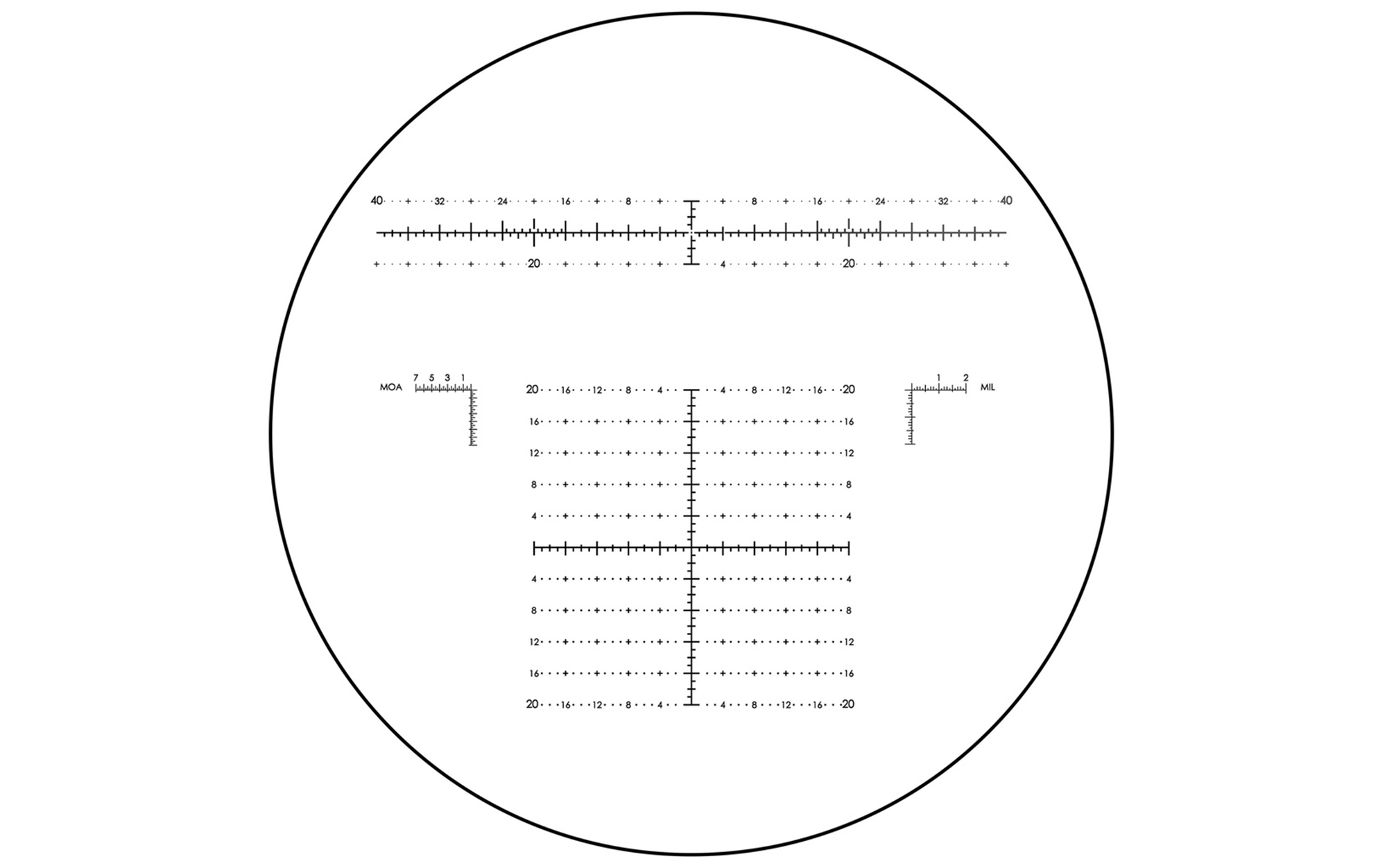
The most noteworthy attribute is its fixed 22-power eyepiece—included with the 27-55-power eyepiece—that contains a ranging reticle that has references for both MOA and MIL shooters. The feature essentially allows a target spotter to call shots using the same references as the shooter, cutting down on time and solving common communication problems between teams of shooters.
The 22-power eyepiece has an impressively wide field of view and excellent clarity. We used it to walk in long shots to test the reticle reach of some of the long range rifle scopes in our test. The 27-55-power zooming eyepiece has no reticle, but serves as a very capable game and target spotter.
Overall, testers liked the responsive controls and overall handling of the Revic. A few noted some edge distortion and a distracting halo around the periphery of the image at most magnifications. And we were surprised that the 80mm scope didn’t perform better in our low-light test.
But the optical resolution of the Acura was the second-best among full-size spotters, and the comfort factor also boosted its overall score. Many testers said they could spot all day with this scope, switching out eyepieces to meet specific needs. The molded foam carry case is also an extremely nice touch, and along with the second eyepiece, adds a ton of value to this excellent newcomer.
Nikon Monarch Fieldscope 82ED-A 20-60×82
Score Card
- Optical Performance: Very Good
- Mechanical Performance: Good
- Design: Very Good
- Price/Value: Good
Key Features
- 82mm objective lens
- Angled eyepiece
- Center-barrel fast focus wheel
- Aluminum-alloy chassis
- Removable eyepiece
- Reverse tripod foot
- Field-flattener lens system
- Extra-low-dispersion glass
Pros
- Excellent color fidelity
- Reverse tripod foot promotes balanced mounting
- Infinitely adjustable eyecup
- Pebbly texturing resists dust and scratches
- Ships with ballistic nylon field case
Cons
- Offset eyepiece distracted some testers
- No numeric magnification indexing
- Very shallow depth of field
One of the “legacy” submissions to this year’s test, the Fieldscope was introduced in 2019, but it remains a strong seller for Nikon. Many of the spotter’s features will be familiar to users of Nikon’s DSLR cameras, including the lens mounting system and the extremely velvety focus and magnification controls. The fast-focus feature is useful, especially for birders who often must ramp up the power from a close-in finch to a distant egret (or whatever variety of bird you prefer).
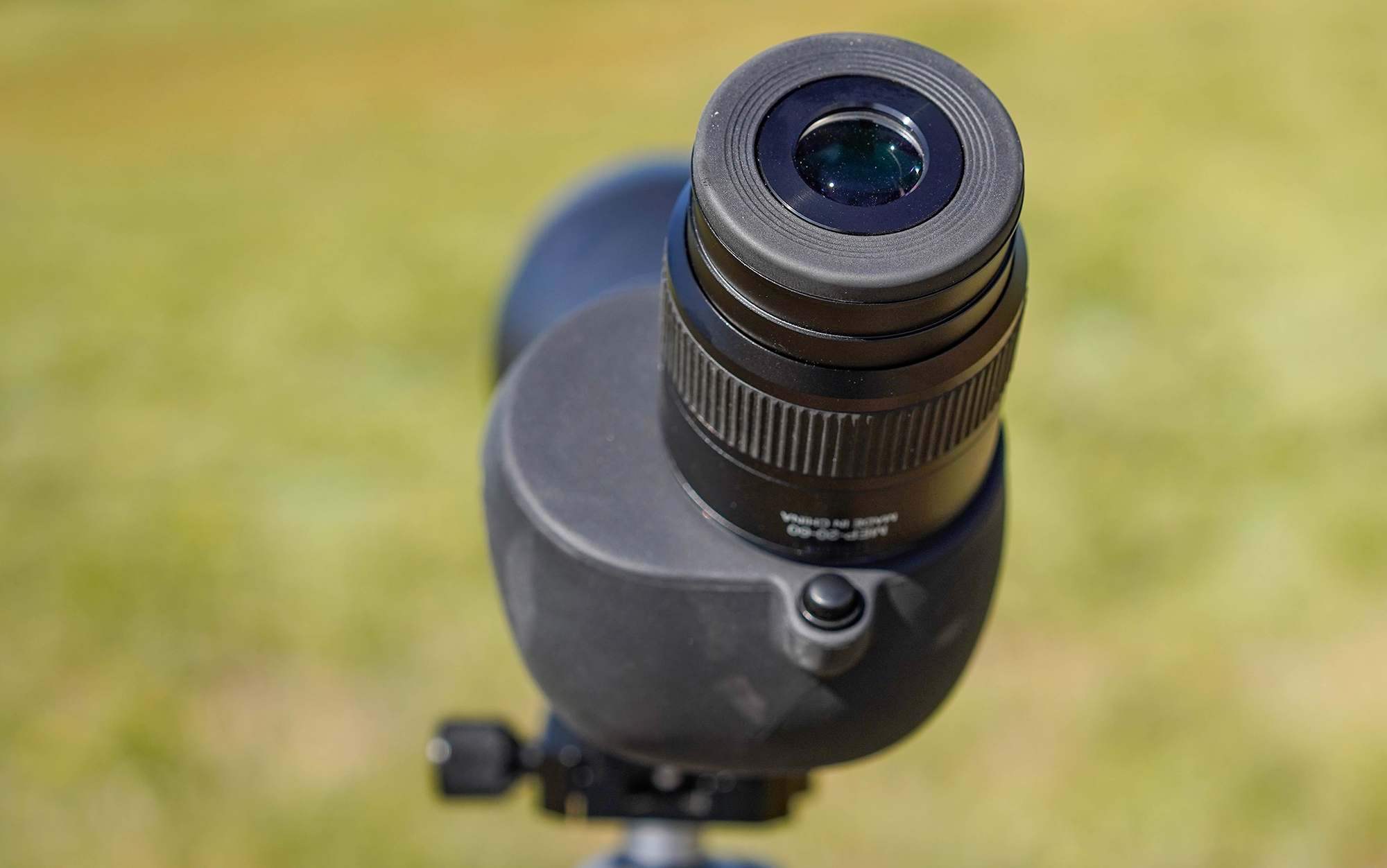
It’s a funky-looking scope, for sure, with its backward-facing tripod mount and its offset eyepiece. But the Nikon is packed with features, including a field-flattener lens system that delivers sharpness way out to the edges, and coatings and ED glass that tame color fringing and boost contrast. Optically, the Fieldscope placed in the upper third of full-size spotters, and testers gave high marks for design and overall value.
With its short overall length (13 inches), fairly light weight (3.6 pounds) and lovely balance, this is a very field-worthy spotter worth every bit of consideration that you’d give a brand new scope.
Sig Sauer OSCAR8 27-55×80
Score Card
- Optical Performance: Good
- Mechanical Performance: Very Good
- Design: Very Good
- Price/Value: Good
Key Features
- 80mm objective lens
- Extra-low-dispersion glass
- Aluminum chassis
- Non-slip rubberized armor
- Angled eyepiece
- Center-barrel focus
- Retractable sunshade
- Distinctive flat dark earth color
Pros
- Premium glass
- Includes fitted neoprene field cover
- Excellent warranty
- Durable
- High-contrast image
Cons
- Image didn’t wow testers
- Middling low-light performance
While the OSCAR8 has been on the market for four years, it remains a solid seller for Sig Sauer, and also represents a rare cross-over spotter, appealing to both hunters as well as long-range shooters. Built around two varieties of premium glass, it’s also one of Sig’s most optically ambitious products.
Specifically, the 80mm spotter sports extra-low-dispersion glass in the objective lens. That’s not uncommon for premium brands, as that class of glass corrects chromatic aberrations, which we see as color fringing and jags of multi-colored light, before they enter the optic. But the Sig is unique in using high-transmission glass on its internal lenses. That glass boosts light transmission and generally improves image resolution.
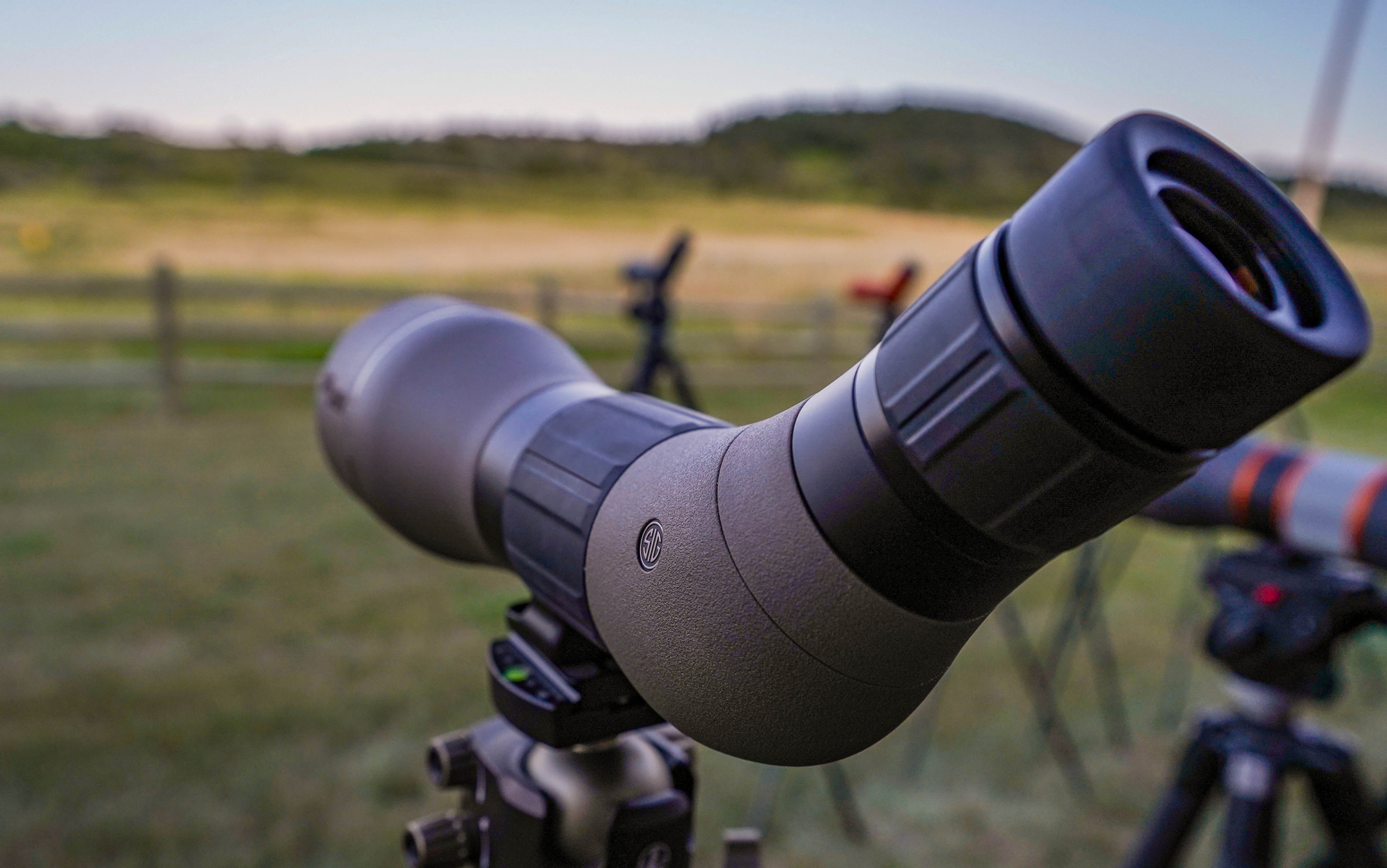
Indeed, the Sig posted a good resolution score, though we were disappointed in its low-light performance, which placed it in the very middle of the pack of nine full-size spotters. But its bomb-proof build and aggressive controls that are a cinch to turn with cold or gloved hands made it a team favorite for both durability and comfort. With a very approachable real-world street price of under $1,700, it’s a good buy for quality glass and a durable build.
Tract Toric UHD 27-55×80
Score Card
- Optical Performance: Good
- Mechanical Performance: Good
- Design: Very Good
- Price/Value: Very Good
Key Features
- 80mm objective lens
- Angled eyepiece
- Center-barrel focus
- Aluminum/polycarbonate chassis
- Removable eyepiece
- Retractable sunshade
- Interchangeable eyepieces
- Direct-to-consumer brand
Pros
- Features Schott high-transmission glass in objective lens
- Ships with nylon field case
- Accepts 22x and 30x eyepieces with either MOA or MIL reticle
- Positive, smooth controls
- Four-position eyecup
Cons
- Magnification ring turns hard
- Zoom range is limited
The only spotting scope—so far—in the growing product line from this direct-to-consumer brand, the Toric UHD is a solid, no-frills optic for wildlife viewing and most distant target games. But the addition of interchangeable eyepieces with reticles elevate this to a very useful aid for any competition shooter.
The 22-power fixed eyepiece ($294) has a MRAD PRS reticle, and the 30-power eyepiece ($344) contains an ELR reticle tuned to MRAD references. Both reticles are offset from the field of view, so they don’t obscure targets while still enabling precise target measurement and follow-up shot corrections.
The balance of the scope is a field-worthy blend of form and function. The premium high-transmission glass boosted the Tract’s resolution score, and while we were disappointed with its low-light brightness, the image quality scores were consistently high. Testers also liked the solid construction, though they complained that the power-changing ring was a bear to turn. The focus wheel, by contrast, was buttery smooth and very precise, allowing for easy one-finger operation.
Testers also appreciated the approachable price and responsive customer service from the brand.
Leupold SX-5 Santiam HD 27-55×80
Score Card
- Optical Performance: Good
- Mechanical Performance: Very Good
- Design: Good
- Price/Value: Good
Key Features
- 80mm objective lens
- Angled eyepiece
- Center-barrel focus
- Aluminum chassis
- Retractable sunshade
- Oversized eyepiece
Pros
- Glare-reducing coatings
- Exterior lenses treated with DiamondCoat 2 scratch-resistant coating
- Oversized twist-up eyecup
- Rugged, easy-gripping armor
- Ships with fitted neoprene field cover
Cons
- Mediocre optics
- Loose sunshade
Leupold’s flagship full-size spotting scope has been on the market since 2018, but it remains a strong seller and field favorite due to its hard-wearing durability and drama-free operation. It simply works in most conditions.
Testers were a bit disappointed in low-light performance, but the Santiam posted a decent resolution score, and in most conditions testers praised its overall brightness and edge-to-edge clarity. Its fully transferable warranty and Leupold’s legendary customer service also boosted its price/value score.
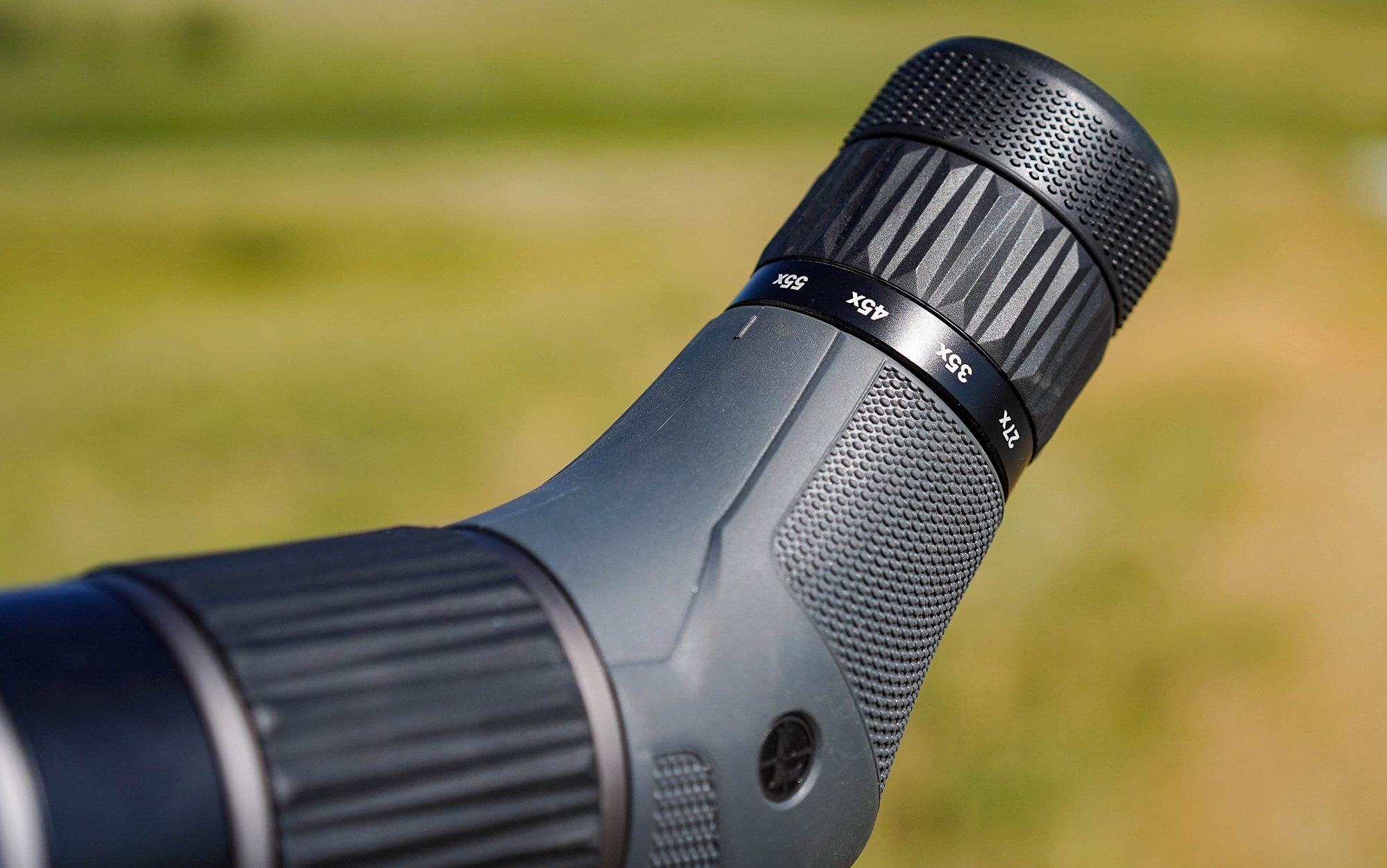
The spotter is also very comfortable, thanks to the oversized eyepiece and big, generous eyecup that lets your face sink into the optic and the aggressively textured focus and zoom controls that turn with authority and precision. We’d like to see this product built around a better grade of glass, which might elevate it from pretty good to outstanding.
Meopta MeoStar S2 82 20-70×82
Score Card
- Optical Performance: Excellent
- Mechanical Performance: Very Good
- Design: Very Good
- Price/Value: Good
Key Features
- 82mm objective lens diameter
- Angled eyepiece
- Removable 20-70x eyepiece; 30-60x wide-angle eyepiece available
- Center-barrel focus
- Retractable sunshade
- Premium extra-low-dispersion glass
- Magnesium chassis
- Lifetime warranty
Pros
- Best-in-class optical resolution and image quality
- Extremely tactile focus and power-changing controls
- Excellent internal coatings and blackening
- Sharp edge-to-edge clarity
- Vivid color and contrast
- Price is about $1,000 below premium European peers
Cons
- Body and eyepieces sold separately
- At nearly 4 pounds with eyepiece, it’s heavy
- Tripod foot could be beefier
- Warranty response is slow and erratic
How did we lose sight of this remarkable spotter? Introduced in 2020, about the same time that Zeiss introduced its flagship Harpia line of spotters and Swarovski wowed the world with its modular ATX/STX/BTX (they stand for angled, straight, and binocular) lines, Meopta produced this world-class optic. It’s one that we overlooked in previous spotting scope tests, though it remains a hot seller for the Czech company.
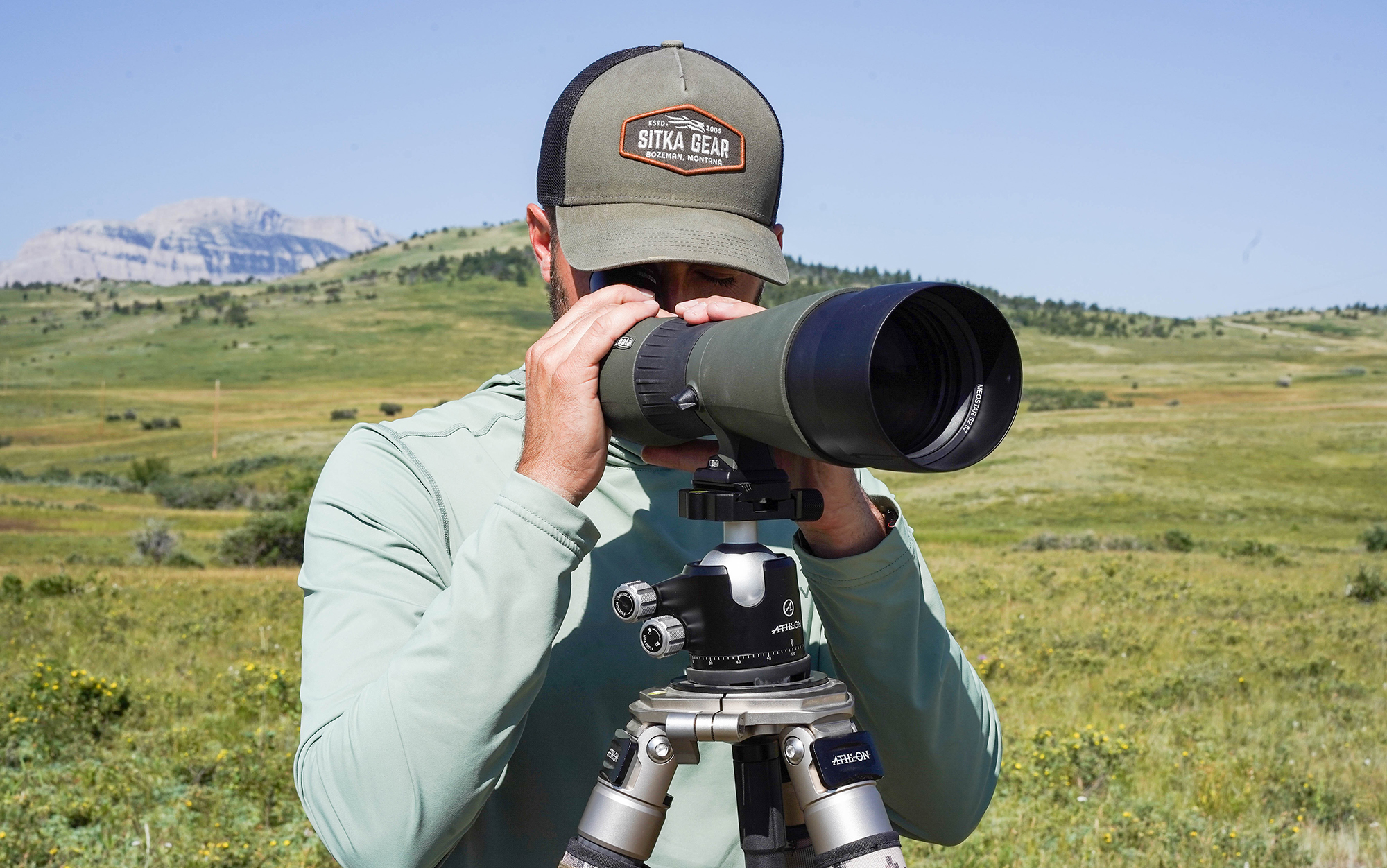
The price — the real-world street price is around $3,000 for both the body and the 20-70-power eyepiece — is about $1,000 lower than its European peers, but you get the same vivid image, the stunning edge-to-edge clarity, and the velvety controls. In short, the MeoStar is an investment-grade spotting scope that is a relative bargain when considered against its competitors.
The Meopta easily won our low-light test, and topped the field in optical resolution. The test team especially liked the long-range detail it produced, even at higher magnifications. “Easy to focus and not-too-narrow depth of field,” noted one tester. “A great scope for someone who wants excellent optics but can’t afford a Swaro.”
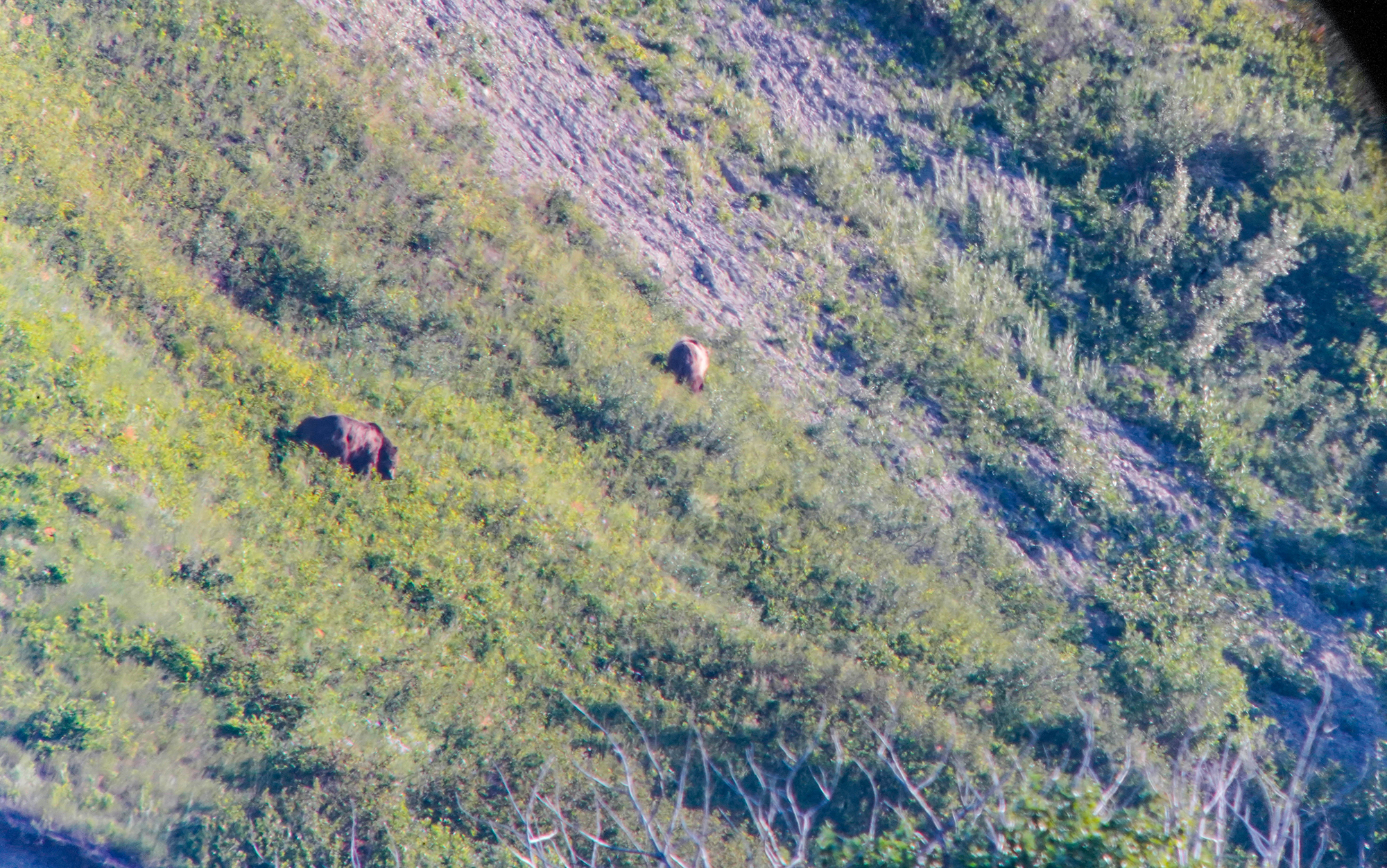
From about 20- to 40-power, the image delivered by the MeoStar is wide and luscious; from about 50- to 70-power, the image gets relatively dark and grainy, but we had a real-world spotting challenge that showed off the Meopta’s talents. In the sunny morning—with rising solar mirages—four grizzly bears emerged from a timbered creek valley to feed on an open slope about 1,300 yards from our cabin. While the image degraded at high powers with other full-size spotters on hand, the Meopta delivered reasonably bright and sharp images of these remarkable bears, rendering enough detail to see that one of the griz had a notched ear, maybe from a fight with other bears or evidence of a missing eartag placed there by bear managers.
Compact Spotting Scopes
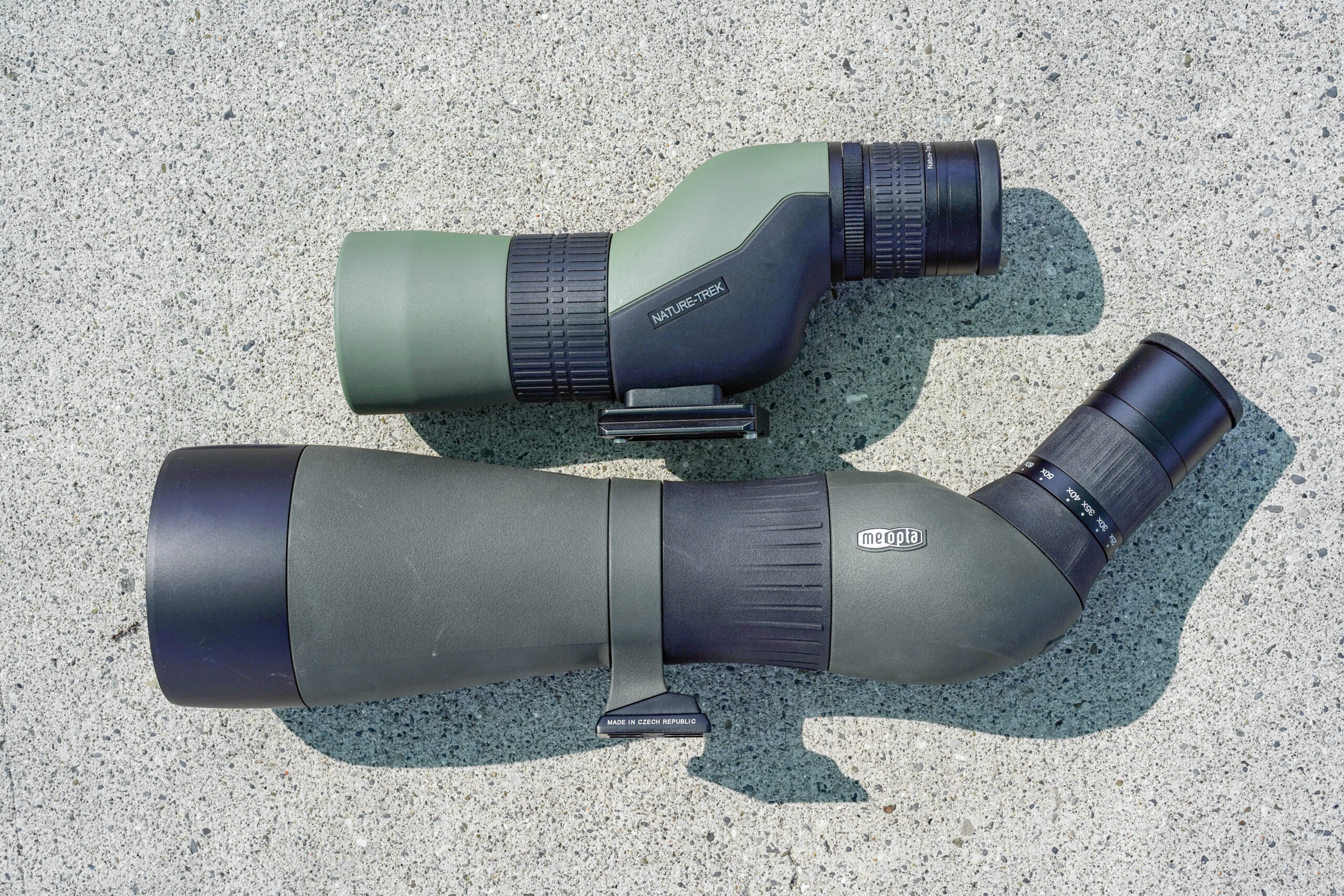
Best Overall: Swarovski ATC 17-40×56
Score Card
- Optical Performance: Excellent
- Mechanical Performance: Excellent
- Design: Excellent
- Price/Value: Good
Key Features
- 56mm objective lens
- Angled eyepiece
- Center-barrel focus
- Polycarbonate chassis
- Removable foot
- Non-removable eyepiece
- Burnt-orange coloration
Pros
- Exceptional glass
- Just over 2 pounds
- Very portable and packable
- Removable half-shell for non-tripod viewing
- Digiscope friendly
Cons
- Pricey
- Limited utility
- Limited focus ring access when tripod-mounted
This compact spotter, clad in distinctive orange armor, simply stunned the test team. It is extremely bright, crisp, and the image it delivers is full of color and contrast. In short, it’s a world-class optic. That said, the team noted that, at $2,500, it will have a limited audience.
“This checks all the boxes for a premium compact spotter, but I don’t think most people want to spend over $2,000 for a mini-spotter,” says tester and OL gear editor Scott Einsmann. “I see this as an aspirational item rather than a replacement for a full-size spotter.”
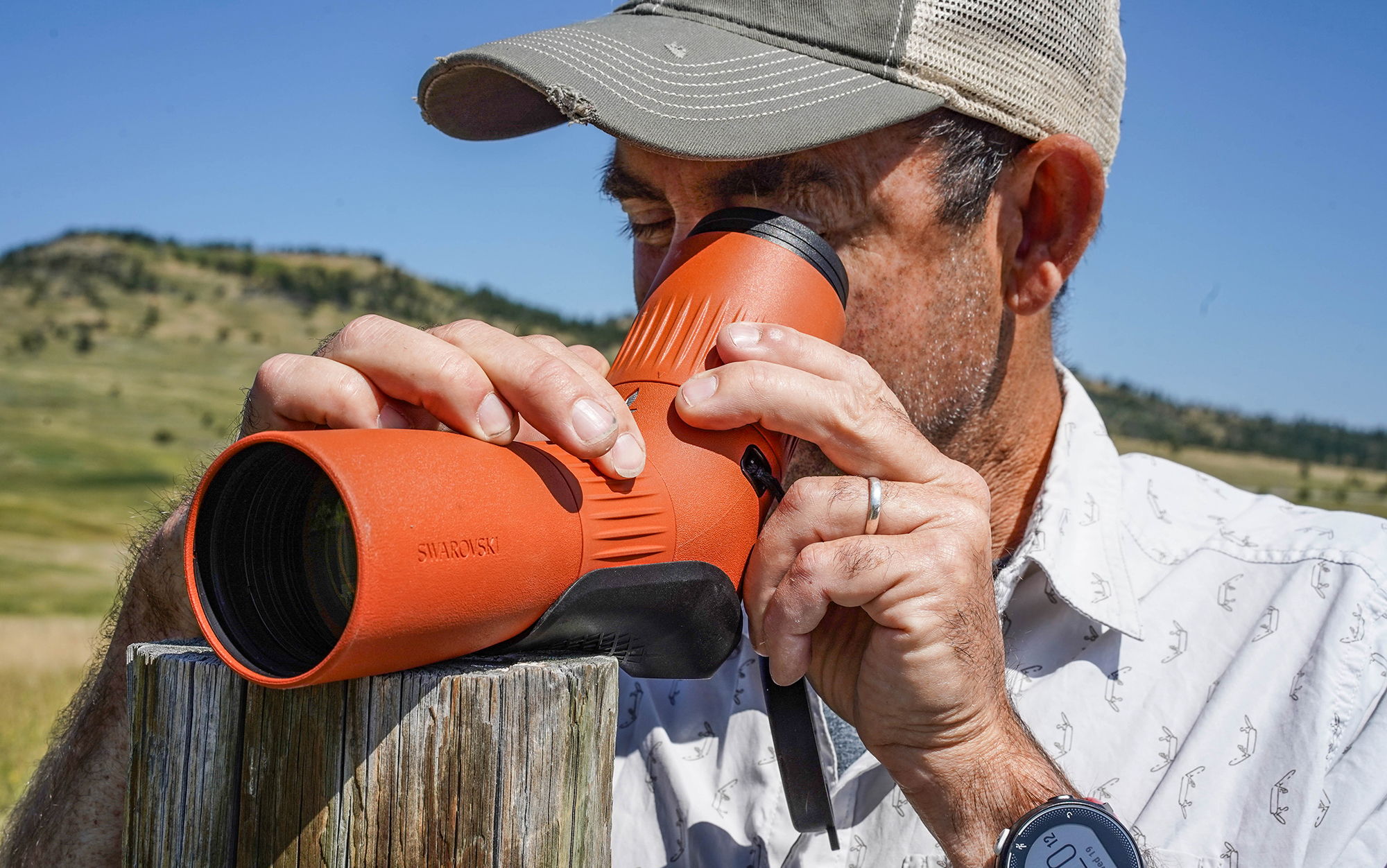
Fair enough, but the Swaro, which is the mini version of the brand’s modular ATC/BTX line of spotters, has plenty of field chops to go along with its aspiration. Its graceful lines, for which Swarovski could win industrial design awards, easily fit in a pack, and nicely balance the 2-pound heft. Mounted on a tripod, the center-barrel focus ring can be hard to access, forcing users to reach over the top to turn the dial with fingertips. But the ATC’s smart and useful “shoe” screws into the tripod receiver and gives the scope’s round body a flat surface on which to deploy it. Picture slapping the scope (with the half-shell shoe) on top of a wooden post or pickup tailgate, sans tripod. The focus ring is unencumbered by the shoe, which stabilizes the scope in any number of situations.
This is clearly not a scope for everyone or for every purpose. But it would be our choice for slinging in a pack for those times when you don’t want to carry a full- or mid-sized spotter and a tripod. As for all those other times when you’re not looking through it, the Swarovski ATC is mighty pretty to simply look at.
Best Value: Hawke Nature-Trek 13-39×56
Score Card
- Optical Performance: Good
- Mechanical Performance: Good
- Design: Good
- Price/Value: Very Good
Key Features
- 56mm objective lens
- Angled dog-leg design
- Center-barrel focus
- Aluminum alloy chassis
- Non-removable eyepiece
- Ships with window mount and neoprene field cover
Pros
- Super compact porro prism design
- Just over 2 pounds
- Handy window mount
- Responsive controls
Cons
- Mediocre optics
- Some internal dust
The consensus pick for our best value in the compact spotting scope category, this little marvel has a length of just over 9 inches and weighs 2 pounds. Introduced earlier this year, the Nature-Trek ships with a handy window mount and a fitted neoprene field cover, further boosting its value.

We were unimpressed with the optical performance, at least compared with the class-leading Swarovski and Maven, but that’s to be expected in a unit that costs a cool third of the latter two submissions. The image, delivered by standard glass, is adequate for most purposes, and the Nature-Trek held its own in both our low-light and resolution tests.
We’d like to see the same Arca-Swiss foot that Vortex employs on its Razor HD, and some testers noted a bit of dust and debris inside the Hawke, evidence of sub-optimal construction. But the unit’s focus and magnification controls turned with precision, and the 14-foot close focus makes it a handy optic for birders and butterfly enthusiasts.
Supported by a tabletop tripod, this would make an excellent range scope. And, at just over $300, it’s a bargain for an extremely packable compact spotter.
Vortex Razor HD 13-39×56
Score Card
- Optical Performance: Excellent
- Mechanical Performance: Good
- Design: Very Good
- Price/Value: Good
Key Features
- 56mm objective lens
- Angled eyepiece
- Center-barrel focus
- Magnesium chassis
- Arca-Swiss compatible tripod mount
- Removable eyepiece
Pros
- Premium glass
- New size in Razor line
- Ships with neoprene field cover
- Excellent controls
- Simple tripod mount
Cons
- Eyepiece attachment is jinky
- Barrel doesn’t rotate
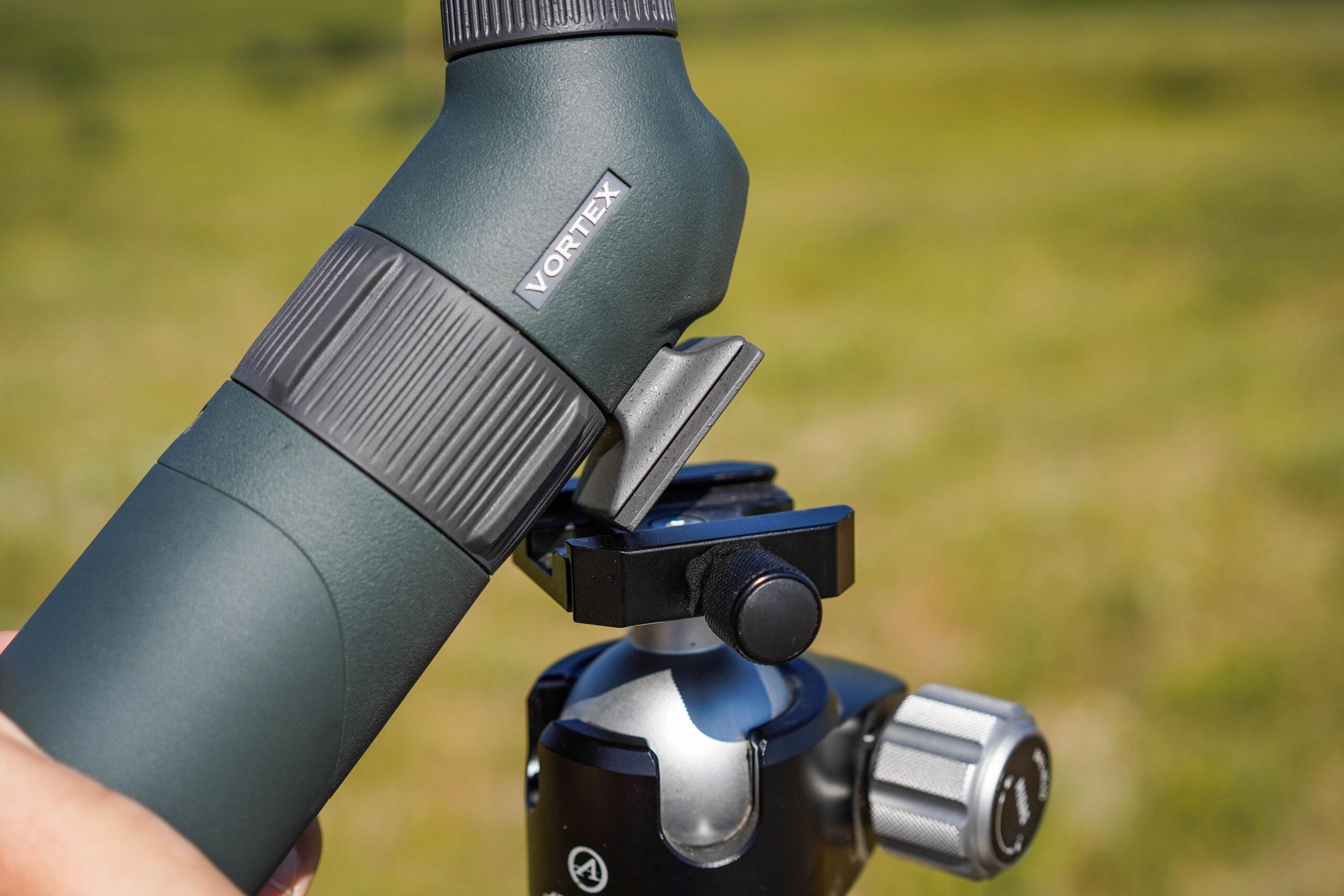
A smart and capable newcomer to Vortex’s excellent Razor HD line, this wee spotter delivers an image much larger than its stature. Its premium glass tames color flaring and other optical aberrations, and the combination of coatings and glass quality elevated the Razor HD to the top low-light performer of the compact scope category. It finished just behind the excellent Swarovski in resolution, as well.
If only the spotter’s mechanics matched its glass. The eyepiece attachment gave the test team fits, easily cross-threading with no clear indication of when the attachment is properly seated. A metal collet that protects the threads further came loose, exposing the optic’s interior to dust and moisture. Testers also recorded that the focus and magnification ring were distractingly stiff.
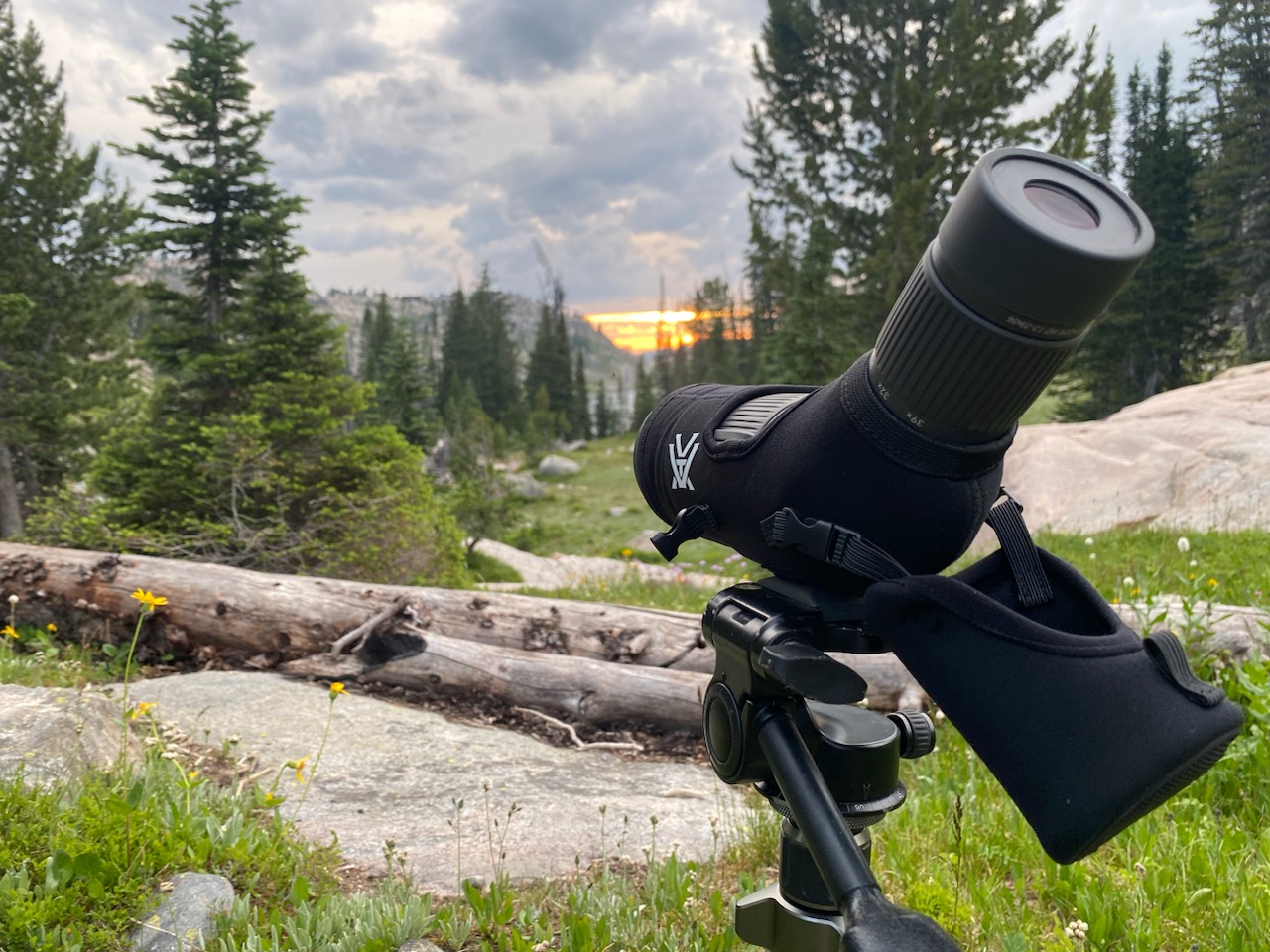
But the Razor HD has enough other talents to offset those mechanical deficiencies. We love the tripod mount, compatible with Arca-Swiss tripod heads. This simple design enables direct mounting, without messing with a separate mounting plate. The pebbly exterior is easy to grip and resists dust and scratching, and the balance is among the best in the class. Plus, testers noted Vortex’s excellent warranty and accessible price, especially consideri
Maven S.2
Score Card
- Optical Performance: Very Good
- Mechanical Performance: Very Good
- Design: Very Good
- Price/Value: Very Good
Key Features
- 56mm objective lens
- Straight-barrel design
- Center-barrel focus
- Magnesium/polymer chassis
- Non-removable eyepiece
Pros
- Extremely tactile texturing on controls
- Distinctive gray/black/orange accents
- Twist-up eyecup
- Rugged, easy-gripping armor
- Premium fluorite glass in objective lens
- Straight design easy to pack
Cons
- Slight edge distortion
- Shallow focal length
One of the shortcomings of compact spotters with angled eyepieces is that they don’t normally rotate. That means that you can’t change the orientation of the optic to your eye, a major hindrance if you’re glassing from a window mount or trying to share the optic with a partner on a sidehill. Happily, the straight-barrel Maven doesn’t have that problem. What you see, literally, is what you get with the design.
That’s only one plus of this handy, bright, and extremely packable spotter. The other, of course, is that the 11-inch tube slips easily in a backpack pocket, making it—along with Leupold’s Gold Ring—the most portable of the class. The glass is excellent, leading with premium fluorite glass in the objective lens and fully multi-coated lenses inside. The controls are positive without being overly resistant, meaning they turn with casual authority. And the looks, orange accents above the gray-and-black exterior, are head-turning.
The S.2 was introduced way back in 2019, but if it now is considered a legacy submission, it was years ahead of its time, since it now conforms easily to the new sub-compact category of spotters. In all, it’s a bright, capable optic that bridges the gap between binoculars and full-size spotters.
Leupold Gold Ring Compact 15-30×50
Score Card
- Optical Performance: Good
- Mechanical Performance: Poor
- Design: Fair
- Price/Value: Good
Key Features
- 50mm objective lens
- Angled dog-leg design
- Side focus
- Magnesium chassis
- Non-removable eyepiece
- Ultra-compact design
Pros
- 21.5 ounces, lightest in the test
- 11 inches long
- Extremely packable
- Ships with fitted neoprene field cover
- Distinctive shadow-gray color
- Useful without tripod
Cons
- Unstable tripod mount
- Power ring turns hard
- Right-side focus awkward for lefties
The test team badly wanted to love this scope. It descends from spotting-scope royalty, Leupold’s excellent Gold Ring and Mark 4 lines. But a couple of demerits knocked this ultra-compact version into the realm of good, but not great, spotters. The main problem we had was the wobbly connection to a tripod, a situation that left us unable to achieve precise spotting at any distance. The problem stems from a plastic-on-plastic interface between the scope’s body and the tripod adaptor. Once we shimmed the adapter and found imaginative ways to tighten the connection, the unit performed well enough to keep it in the test.
The glass is good, but not quite on par with the premium scopes in this year’s test, but the 50mm objective lens, much smaller than its 56mm peers, kept it toward the bottom of our low-light test. Other testers complained that the reverse porro-prism design—Leupold calls this its “Folded Light Path”—doesn’t point instinctively and was hard to get on target.
Those deficiencies out of the way, this is among the most packable scopes in the compact field. Weighing only 21 ounces and measuring only 11 inches, it goes everywhere. Plus, the design is intended to be used without a tripod, by wedging the scope in a tree branch or pack frame. That helps explain why the tripod mount isn’t a deal-breaker. The size, magnification range, and overall handling make this a good alternative to a 15-power binocular and a useful companion on a backcountry hunt.
Spotting Scopes with Reticles
Best Overall: Maven S1.2S 25-50×80 w/ MOA/MRAD Reticle Eyepiece
Score Card
- Optical Performance: Excellent
- Mechanical Performance: Good
- Design: Very Good
- Price/Value: Good
Key Features
- Straight barrel
- Center-barrel focus control
- Integrated Arca-Swiss tripod mount
- Removable eyepiece
- S1.2 eyepieces available in both MOA and MIL versions
- Reticle eyepiece also fits Maven’s mid-size S3 spotters
Pros
- Tight and durable armor
- Checkering on all moveable parts is grippy and handsome
- Premium glass and coatings
- Straight design fits pack pockets
Cons
- Distressing amount of play in eyepiece locking collar
- At $2,200, a pricey optic
The consensus favorite spotting scope in our test, the Maven would have received even higher scores if our unit didn’t have a distractingly loose locking collar where the removable eyepiece meets the scope body.
“I really like this spotter but the loose fitting eyepiece would drive me crazy, and I don’t have confidence that moisture/dust wouldn’t enter through the eyepiece connection,” noted tester Scott Einsmann. Even if the connection is tight as a drum, the errant movement is entirely out of character for such a tight, precise optic as the S1.2S.
Indeed, the rest of the scope is nearly perfect. We loved the bright glass and vibrant coatings, and the focus wheel moves with hydraulic precision. The 25-50-power zoom eyepiece that comes with the scope provides a useful combination of wide-angle and bright at its lowest powers to providing good detail at its highest power. Many spotting scopes have top magnification in the 70-power range, but the zoomed-in image they provide is so dark and grainy that it’s rarely useful. By capping magnification at 50X, the Maven delivers a decent image across the zoom range. We should note that the S1.2S isn’t entirely new; an angled version of the scope (the S1.2A) has been in Maven’s product line for a year. Both scopes have an integrated Arca-Swiss foot that mates up with any tripod head with that useful quick-release mounting system. Why more spotters don’t have this handy mounting option is a mystery to us.
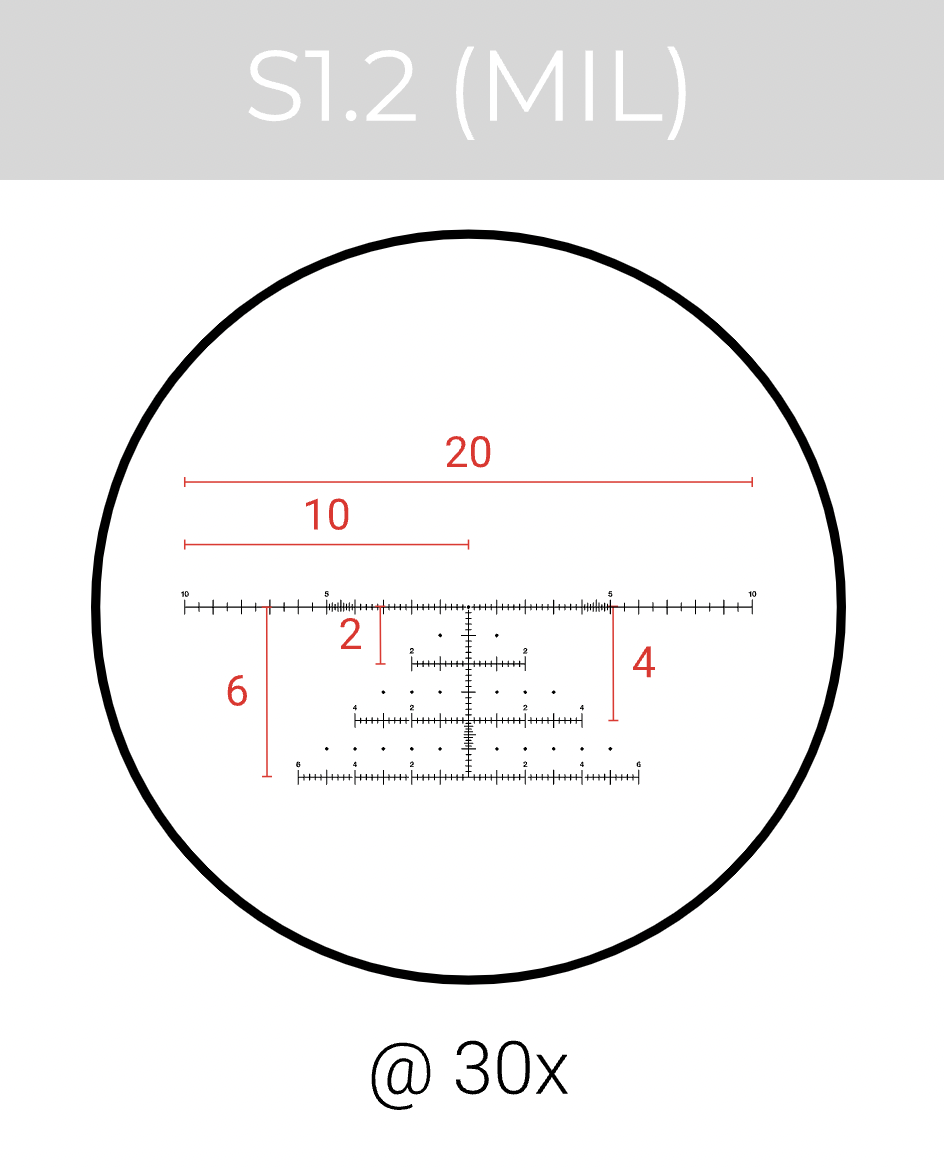
Maven is making the S1.2 platform even more useful with its optional reticle eyepieces, which are sold separately for $300. Both MOA and MIL versions are available, and these also fit Maven’s 67mm S3 spotters. In the 80mm S1.2 configuration, the eyepieces are fixed 30-power; in the 67mm version, they’re fixed at 24-power.
Our test sample came with the MIL version. Elevation and windage hashes are etched every .2 MIL, with 6 MILs of elevation and 10 MILs of windage on either side of the center. The reticle has .1 MIL ranging references on both the vertical and horizontal stadia. The MOA version has 1 MOA hashes with 20 MOA elevation references and 30 MOA windage on either side of a floating center dot.
At 30X, the fixed power for the 80mm spotter, the combination of target clarity and field of view is nicely balanced. The reticle is easy to see and isn’t too cluttered, and the .2 MIL references are standardized enough to make communication with MIL-based shooters simple and clear. For strict observation purposes, users can simply lower the reticle out of the center of the image and use the S1.2 as they would any spotting scope without the reticle.
The 80mm S1.2S is a lot of scope. With the zoom eyepiece it weighs just over 4 pounds. For wildlife viewers who need all the magnification the variable-power eyepiece delivers, it’s a great choice. But for shooters and range observers, the 67mm S.3 spotter (our review is also in this year’s test) may be a better choice, and with the fixed reticle eyepiece, it’s both portable and powerful enough to pack on dynamic multi-stage shoots.
We have every confidence that Maven will correct the eyepiece movement and offer the S1.2S in a tight, durable package that will offer years of excellent precision and optical performance.
Best for Precision Shooting: Tract Toric UHD 22-45×65 w/ 18X and 25X MRAD Eyepieces
Score Card
- Optical Performance: Very Good
- Mechanical Performance: Excellent
- Design: Very Good
- Price/Value: Very Good
Key Features
- Angled eyepiece design
- Center-barrel focus control
- Rotating barrel feature
- Excellent Schott high-transmission glass
- Locking removable eyepiece
- 3.25 pounds
Pros
- Aluminum/polycarbonate chassis
- Accepts reticle-equipped eyepieces
- Field-proven glass and coatings
- Very useful mid-sized build
- Nicely balanced for tripod mounting
Cons
- Lacks Arca-Swiss mounting foot
- Inverse-L reticle takes some practice to deploy
The designers of this excellent mid-sized and mid-priced spotting scope clearly spend a lot of time behind their equally excellent rifle scopes. This spotter is sized for packing, but the availability of two sold-separately eyepieces with MRAD references hints at Tract’s familiarity with long-range precision shooting.
More on the eyepieces in a bit. First, the optics in this premium spotter wowed our test team. While it finished just behind some of the super-sized spotters in our low-light and resolution tests, it was the top mid-size finisher, and testers commented on the vibrancy and brightness of the image delivered by the Toric as well as the generous 19mm eye relief on the reticle eyepieces that enable long, fatigue-free spotting sessions. At about $1,300, testers also thought the Tract was appealingly priced.
“The image through this scope is almost 3-dimensional,” noted a tester, who applauded its edge clarity and color rendition.

The removable eyepieces add a lot to the equation. Tract has a pair of them, both offset on the edge of the image so they don’t obscure the field of view. The PRS eyepiece, at 18-power (it’s a 22-power in an 80mm scope), features larger hash marks every .5 and full MIL and smaller hashes at .2 MIL. The inverse L PRS reticle has 20 MILs of elevation and 20 MILs of windage for both range estimation and windage/elevation correction. The PRS reticle sells for $294.
Tract also has a 25-power (30-power in an 80mm scope) ELR reticle that has identical references to the PRS reticle, but because it’s slightly larger, its ranging references are tuned to 25X subtensions. The reticles’ design and functionality will be familiar to any shooter who competes with a MIL-based rifle scope.
Testers had mixed reviews of the offset reticle. Half of us liked the unobstructed image, the other half complained about having to manipulate the tripod to move the reticle to the target. The team was more unified in our suggestion that the reticle needs more variation, maybe alternatively bold and fine milling lines at every two MIL demarcation.
But those are fairly small quibbles. Our main take-away is that this is a very capable scope that’s equally at home on the range, in the heat of a PRS match, or spotting wildlife.
Best Mid-Size: Maven S3 20-40×67 w/ 24X MIL or MOA Reticle Eyepiece
Score Card
- Optical Performance: Very Good
- Mechanical Performance: Excellent
- Design: Very Good
- Price/Value: Good
Key Features
- Straight-barrel design
- Center-barrel focus control
- Integrated Arca-Swiss mounting foot
- Removable eyepiece
- Aluminum/polymer/magnesium body
- Barrel rotation
Pros
- Optional reticle-equipped eyepiece, 22-power in 67mm scope
- 3-meter close focus
- Premium fluorite glass
- Eyepieces available in either MOA or MIL versions
Cons
- Distracting movement at point where eyepiece mounts to body
- At 3.75 pounds, fairly heavy for mid-size spotter
While the mid-sized Maven didn’t score quite as well as its 80mm sibling, testers generally liked the packability and overall handling of the 67mm S3, especially for range work. One of the coolest details is that users who want to add a reticle eyepiece to their spotter don’t have to settle for either the S3 or the S1.2 since the Maven eyepieces fit both models.
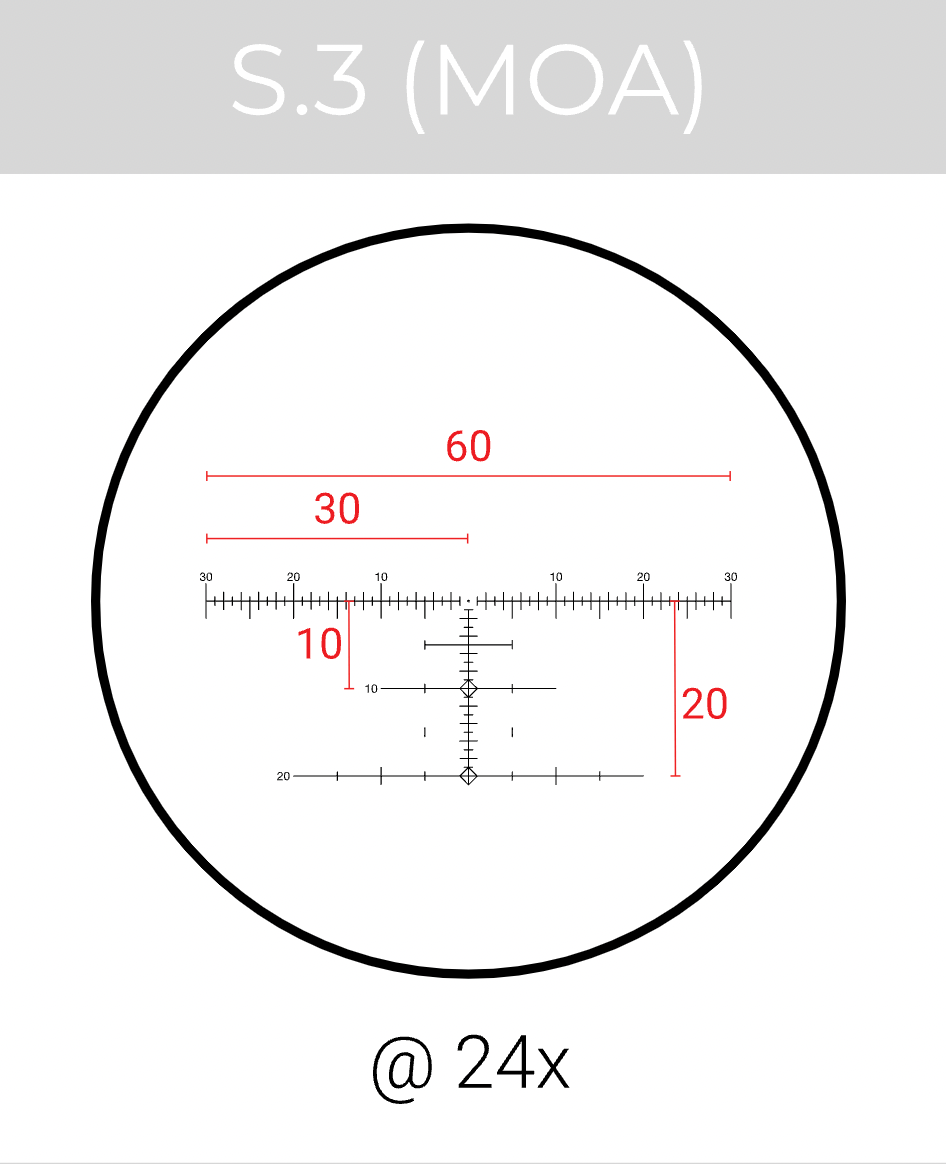
Because the larger objective lens influences magnification, it’s important to know that the same eyepiece will have a lower magnification in a smaller scope. So the reticle eyepiece is a 30-power in the 80mm Maven but a 24-power in the 67mm scope. That fixed power is an important consideration if you’re using the reticles to range targets.
We tested both MIL and MOA versions of Maven’s eyepieces, and found them equally useful, though since our testers lean toward MILs in their rifle scopes, we tended toward the S.3 MIL eyepiece. That version has 6 MILs of elevation references and 10 MILs of windage values on either side of the center aiming point. Hashes are spaced .2 MILs apart with longer hashes at .5 MILs. The tree-style reticle has .1 MIL windage dots down the vertical field to provide wind holds at distance. Ranging brackets divided into .1 MIL values are on both the horizontal and vertical stadia.
As we discussed in the S1.2 review, the MOA version has a similar arrangement in 1 MOA values. Significantly, the MOA version does not have granular ranging brackets.
Just as significantly, as we reported in the S1.2 review, we detected the same sloppy fit of the reticle eyepieces in the S3 model. The bayonet mount fits tightly, but the locking collar allows a slight but distracting amount of movement of the eyepiece. In practice, it means that users have to tolerate a bit of extraneous movement in the eyepiece before it can be focused to the users’ eye.
But the reticles are both nicely visible at distance and against cluttered backgrounds, and we think the 67mm spotter is sized right for packing or for most range work. Maven has delivered a very useful, well-built, bright, and versatile spotter for a wide range of work.
Most Innovative: Nightforce CFS 6-36×50
Score Card
- Optical Performance: Good
- Mechanical Performance: Excellent
- Design: Excellent
- Price/Value: Fair
Key Features
- Straight-barrel design
- Center-barrel focus and magnification controls
- Available with M-LOK accessory cage
- Available in first-plane MIL-XTs, TREMOR4, and MOA-XTs reticles
- Close focus under 9 yards
- Just over 2 pounds
Pros
- Extremely configurable
- Battle-proven durability
- Useful as magnifier for reflex sights
- Easy to match to appropriate Nightforce rifle scope reticle
- Ships with handy zippered carry case
- Detented diopter focus is a nice touch
Cons
- At nearly $3,000, wildly expensive
- Fairly narrow use range
- Eyecup is sharp and hard
Nightforce’s new CFS stands for Configurable Field Spotting Scope, and its ability to transform from a very capable range spotter to a slave optic for a thermal or a magnifier for a reflex sight gets at its value proposition. It’s versatile as hell.
But testers questioned whether that versatility has a cost, holding it back from excelling at any one thing. Our test mainly evaluated its merits as a range spotter, which admittedly doesn’t test its wider talents. Take some of our comments with that limitation in mind.
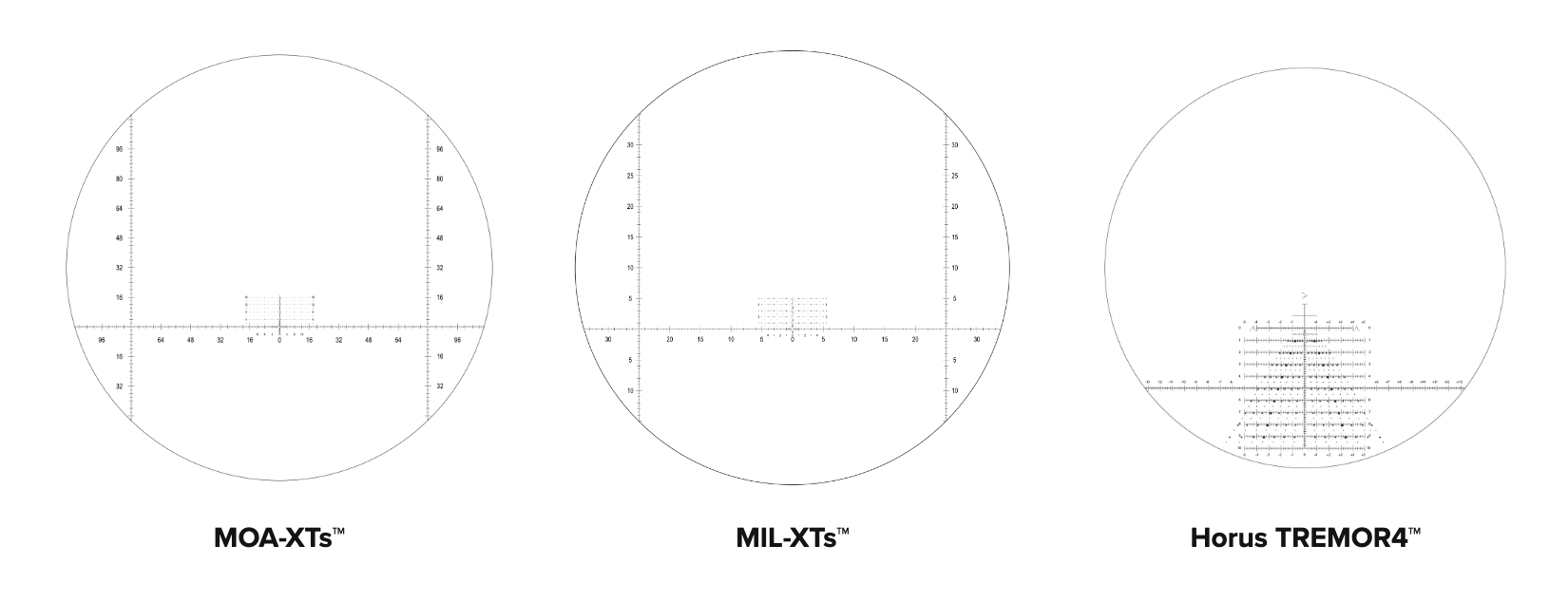
Nightforce
Our test sample had the MIL-XTs reticle, which was handy since many of the rifle scopes in our test had similar MIL-based reticles. We were able to call hits and misses with a minimum of confusion based on the shared visual language between platforms. The first-plane spotting scope reticle is a handy feature, since spotters and shooters can tune their optics to the same magnification to further align their sight pictures.
But the Nightforce was useful on the range in a fairly narrow magnification range, from about 10X to 22X. Lower magnifications make the first-plane reticle virtually disappear, and higher magnifications obscured much of the reticle’s references. The sweet spot, in terms of reticle visibility, is about 18X. The reticle has a good combination of ranging references, windage, and elevation holds, with a granular grid that’s 10 MILs wide and 5 MILs high.
“The scope has a great zoom range for a pocket rocket but the reticle makes no sense for many purposes,” says tester Luke Coccoli, who described the Nightforce’s aggressive styling as a “Darth Vader gender identity crisis.”
“Zoomed all the way in, you lose most of the reticle,” he noted, “but when it’s zoomed out to spot high-elevation shots it’s hard to see the reticle references.”
The CFS’s optics aren’t great. At lower magnifications, we noted pretty good brightness and sharpness, but at its highest magnifications, images got grainy and dark.
For those of us who shoot Nightforce optics on the competition circuit and at the range, the CFS’s operation is familiar and fast. The focus control is just inside the zoom ring, and once you get the hang of the couplet, you can work the controls with fingertips.
The sold-separately accessory cage is a key addition. With M-LOK mounting locations all around the cage and threaded holes to accept any number of lights, rangefinders, lasers, and other devices, mounting the cage to a tripod seemed downright boring.
This spotter isn’t for everyone, just as it isn’t for every purpose. But for dynamic shooting situations when durability is as important as optical performance, this is a very welcome addition to the spotting scope pantheon.
Athlon Cronus G2 UHD 7-42×60
Score Card
- Optical Performance: Fair
- Mechanical Performance: Good
- Design: Fair
- Price/Value: Good
Key Features
- Straight barrel design
- Magnification, focus, and diopter controls in eyepiece
- First-plane TSSR MIL-based reticle
- Fixed eyepiece
- Thick and durable rubber armor
- Top-mounting Picatinny rail
Pros
- Ships with neoprene jacket
- Useful MIL-based ranging reticle
- Designed for shooting-range work
Cons
- No eyecup or sunshade
- Sluggish controls
- Forgettable optics
Tester Scott Einsmann calls this a “steampunk spotter,” and that’s about the best description I can conjure. It’s an overbuilt behemoth of an optic that has abundant talents as a shooter’s companion but limited versatility beyond the range.
The first-plane reticle is actually pretty handy, though testers noted that useful magnification ranges from about 15X to about 30X. That means that most of its magnification range isn’t all that handy. But the TSSR MIL reticle has a number of appealing features. At about 14X, the entire reticle is visible, giving spotters 24 MILs of elevation references and 24 MILs of windage on either side of the central T-shaped aiming point. Hashes are delivered in .2 MIL increments with ranging references between 5 and 6 MILs on both the vertical and horizontal axis.
The top Pic rail is a nice touch for those spotters who want to mount an accessory. And the overbuilt armor should protect the Cronus from the abuse of the range and field. But it’s hard for us to imagine taking this capable range-ready spotter to wildlife observation.
GPO TAC45 15-45×60
Score Card
- Optical Performance: Fair
- Mechanical Performance: Fair
- Design: Good
- Price/Value: Good
Key Features
- Compact porro-prism design
- First-plane PLR reticle
- Fixed eyepiece
- 3 Picatinny rails for various mounting options
- Removable honeycomb objective lens cover
Pros
- Extremely compact
- Reticle matches MIL-based rifle scope reticles
- About 2.5 pounds
Cons
- Close-proximity adjustments hard to operate
- Gritty glass
The design and external lines of this range-ready spotter are highly appealing. Like Leupold’s “Folded Light Path” Gold Ring spotter, the GPO is built around a porro-prism design that enables a very short, compact package.
The first-focal-plane reticle is another good touch. The PLR reticle is built on MIL references in a tree-style configuration that has abundant elevation and windage references. Unlike many first-plane reticles, the GPO has a whopping 38 MILs of elevation references, so long-range shots should be spottable in this optic.
But the TAC45’s glass holds the optic back. Most of the test team concluded they wouldn’t choose this spotter for wildlife observation, which is an important use-case for the category. Its glass is dark and a bit blurry around the edges, especially at higher powers.
We did like the abundant Pic rails that allow users to attach rangefinders, lasers, and other devices, and we like the portability. This is the perfect companion for a shooter at a bench. The handling takes some practice, largely because the zoom control and focus are stacked on top of each other on the eyepiece, and it’s difficult to make quick changes because of the close proximity of the controls.
We love the configuration. The magnification range – 15-power to 45-power – is perfect for most shooting purposes, and the GPO would be a good companion for a precision shooter on a dynamic range or any situation where size and mobility add value to a MIL-based shooter.
How to Choose a Spotting Scope
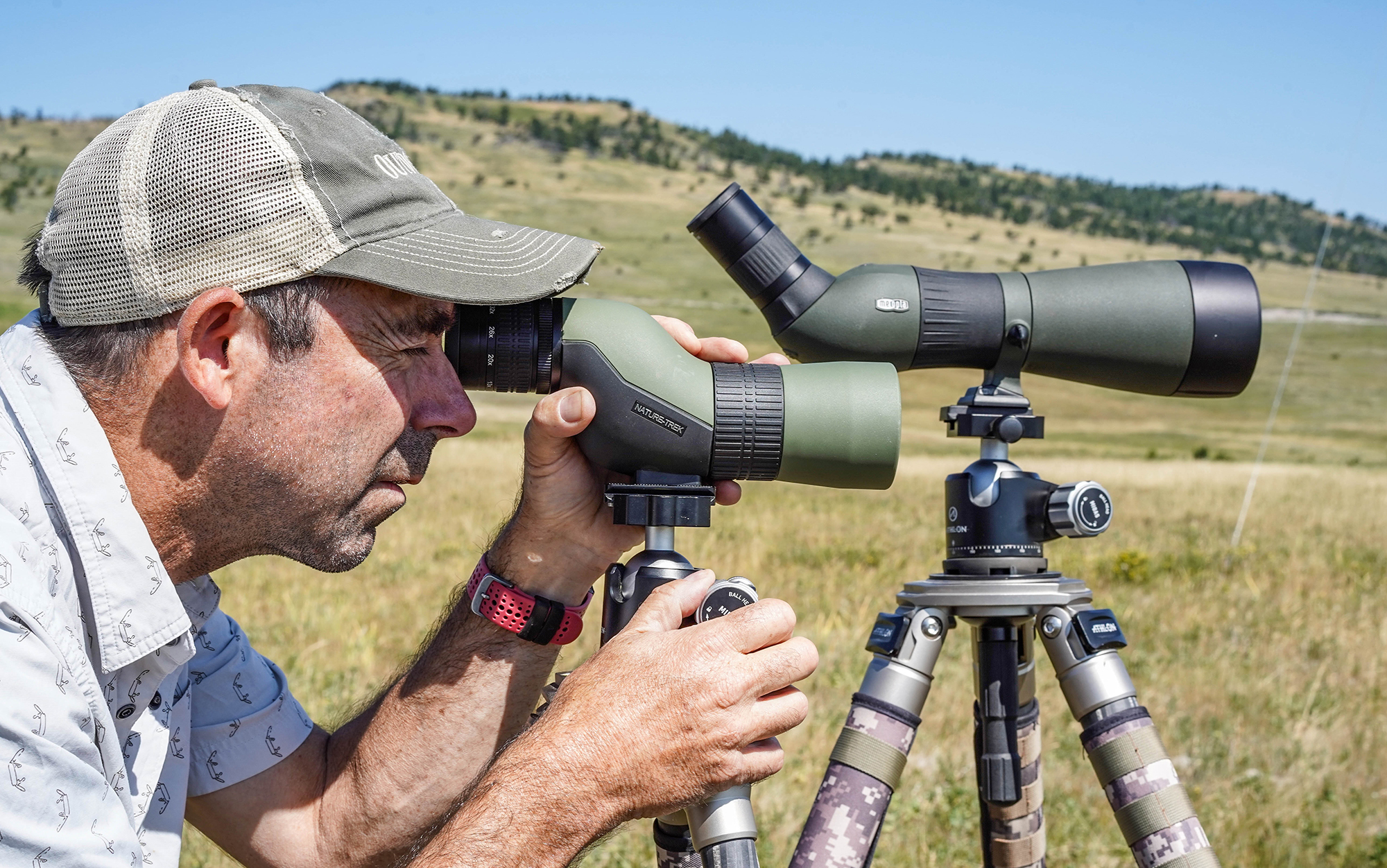
Since even good budget spotters average over $1,000 and premium optics can cost up to $4,000, spotting scopes are among the most price-prohibitive pieces of outdoors gear. That means you want to be sure you’re buying the best scope for your use.
Full-size units start at 80mm objective lenses and can go up to 90 and even 95mm. That’s a lot of glass. Make sure you’re going to get the most out of it by investing in a stout tripod that will stabilize the scope. Second, really consider whether you need a full-size unit, or whether a 65mm or even a compact 56mm spotter is more your speed. For most of us who carry spotting scopes for miles over rough country, the smaller versions are preferable over the super-sized ones.
Next, consider whether you want an angled or a straight-body scope. I prefer angled scopes because of their versatility. I can easily deploy one on a steep hill, and by rotating the barrel, I can share the scope with a buddy sitting beside me without ever moving the scope.
Other considerations: center-barrel focus or fingertip focus close to the eyepiece. Also magnification range. Most full-size scopes have 20- to about 60-power magnification zoom ranges that cover most practical glassing purposes, but if you need more magnification, you’ll probably pay for it.
Look for spotters that have fully transferable lifetime warranties, good customer service, and solid reputations. After all, you’re going to be laying out a lot of cash for this spotter, and you want to make sure the company stands behind their product.
Final Thoughts on the Best Spotting Scopes
This was the first year we tested the best spotting scopes that have been on the market for a few years against new-for-’23 products, and we were both surprised and delighted to see the oldies pull their weight. That’s an indication that optics built with premium components and durable construction retain their value, and for buyers it means that you might find some very good deals on scopes that are being discontinued.
Testers were also interested in seeing how many spotters are relative clones of one another. We had three or four submissions that likely originated in the same factory, with only coatings and armor—and sometimes, a different grade of glass—differentiating them.
Full-Size Spotting Scopes
- Best Overall: Meopta MeoStar S2 82 20-70×82
- Best Value: Athlon Cronus G2 20-60×86
- Maven S.1A 25-50×80
- Revic Acura S80a 27-55×80
- Nikon Monarch Fieldscope 82ED-A 20-60×82
- Sig Sauer OSCAR8 27-55×80
- Tract Toric UHD 27-55×80
- Leupold SX-5 Santiam HD 27-55×80
Compact Spotting Scopes
- Best Overall: Swarovski ATC 17-40×56
- Best Value: Hawke Nature-Trek 13-39×56
- New Launch: Vortex Razor HD 13-39×56
- Maven S.2
- Leupold Gold Ring Compact 15-30×50
The post The Best Spotting Scopes of 2024, Tested and Reviewed appeared first on Outdoor Life.
Source: https://www.outdoorlife.com/gear/best-spotting-scopes/
